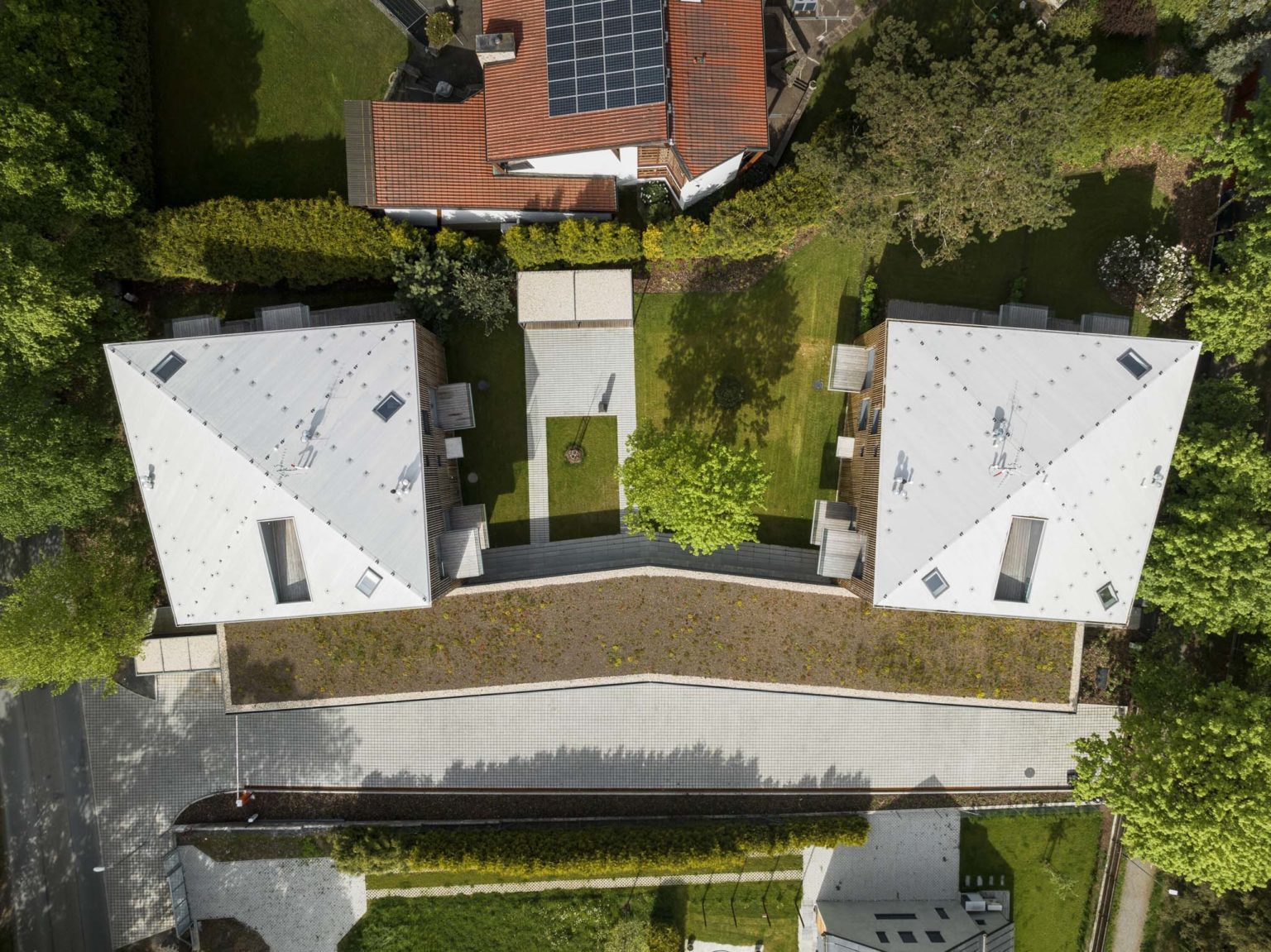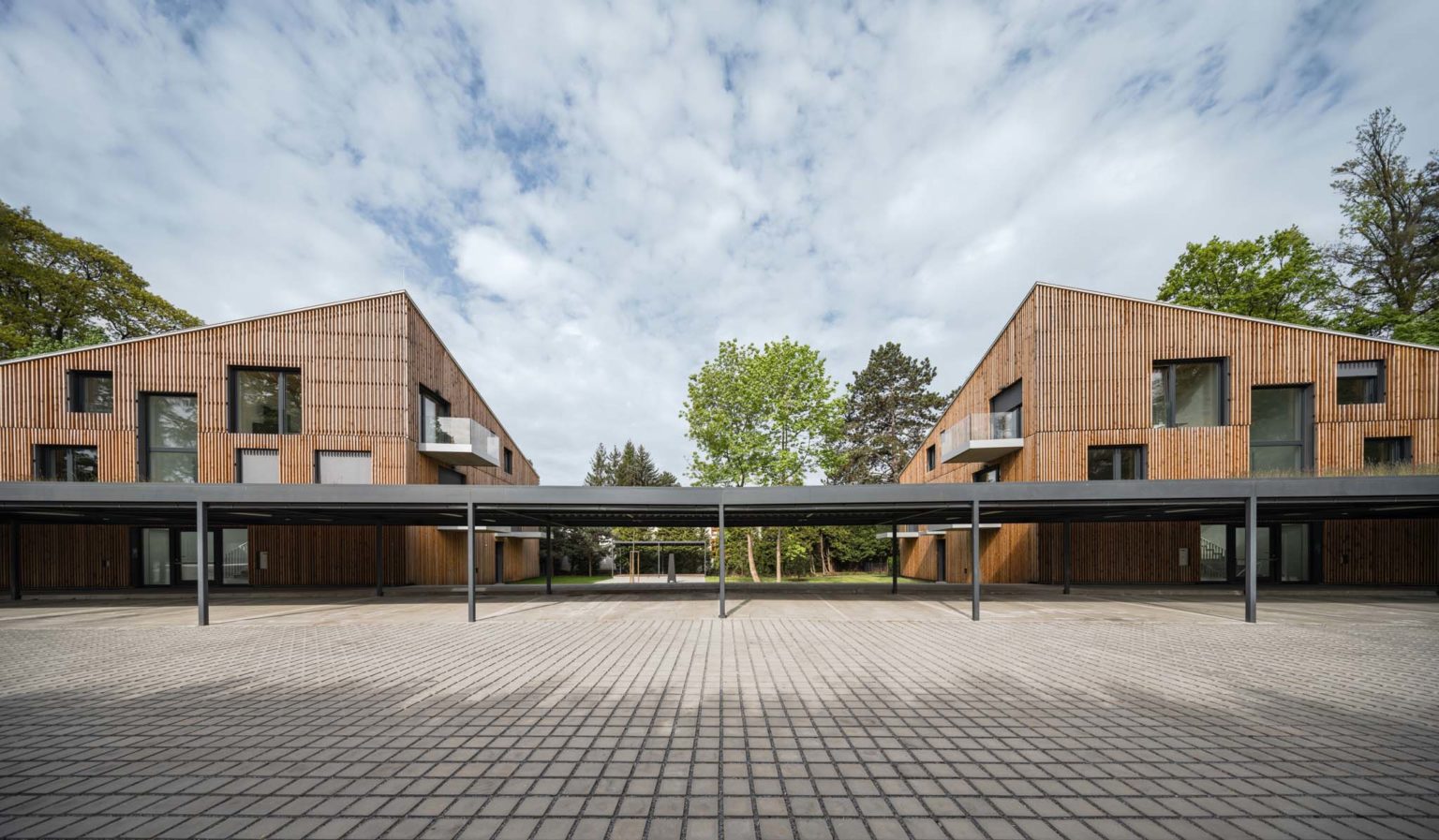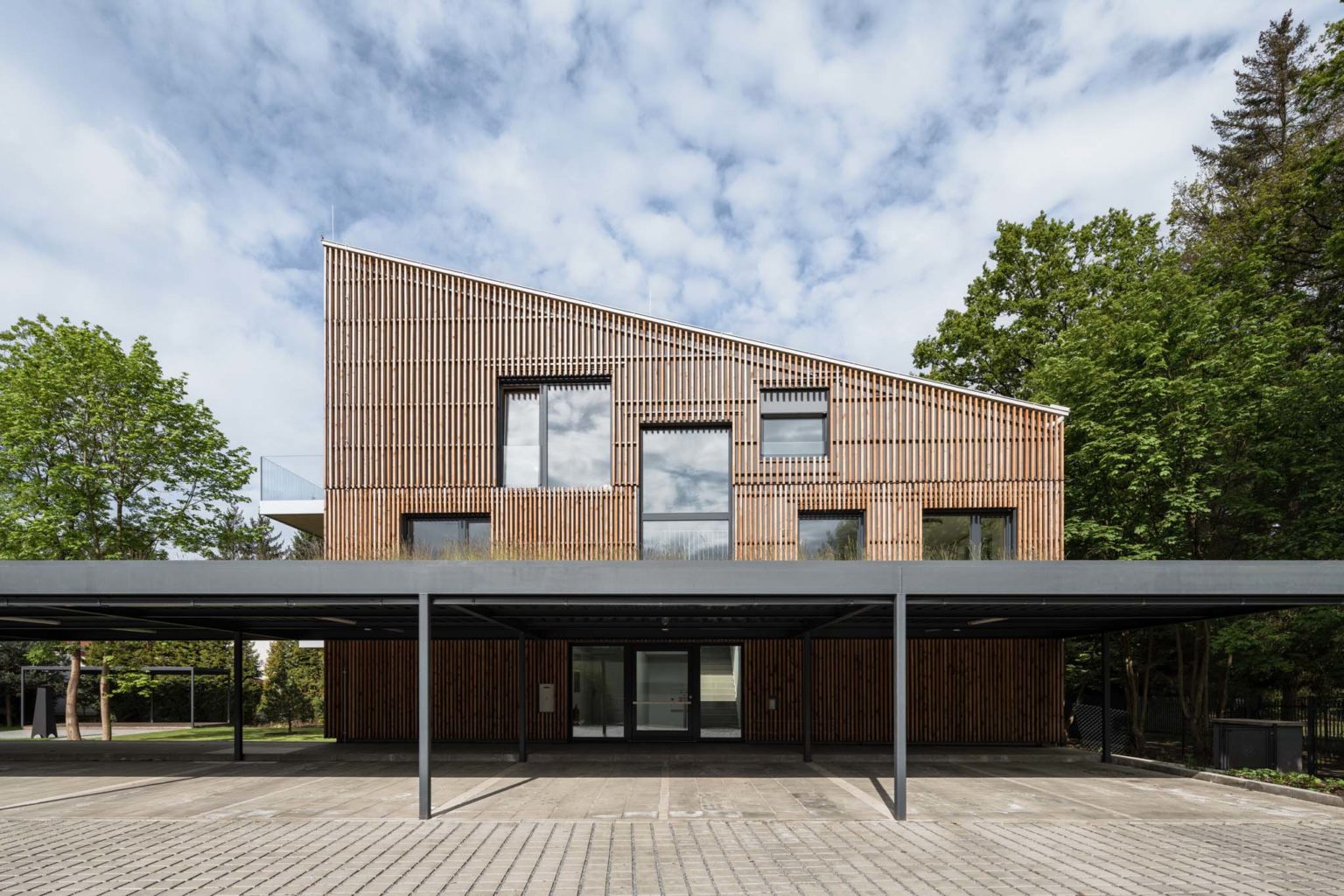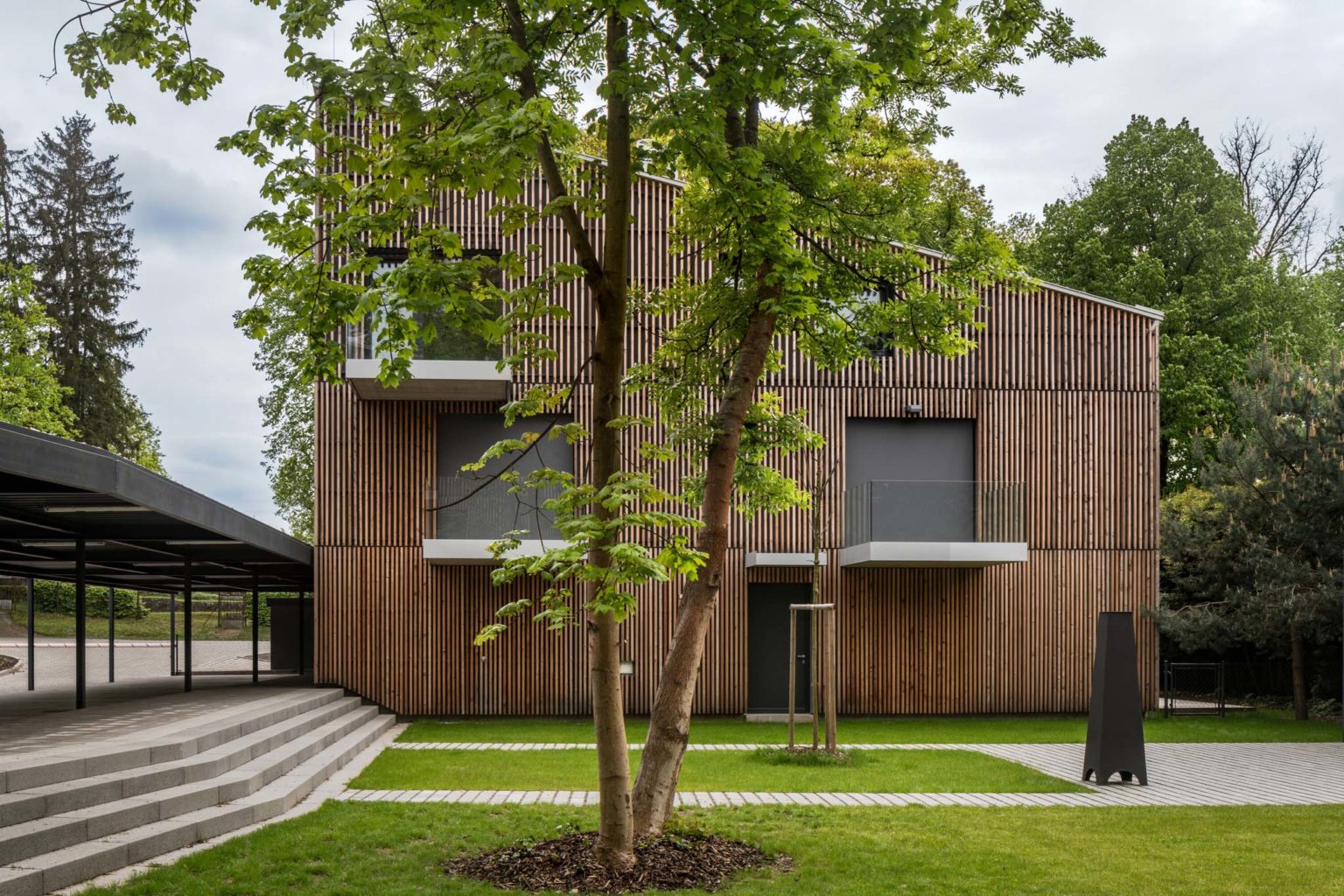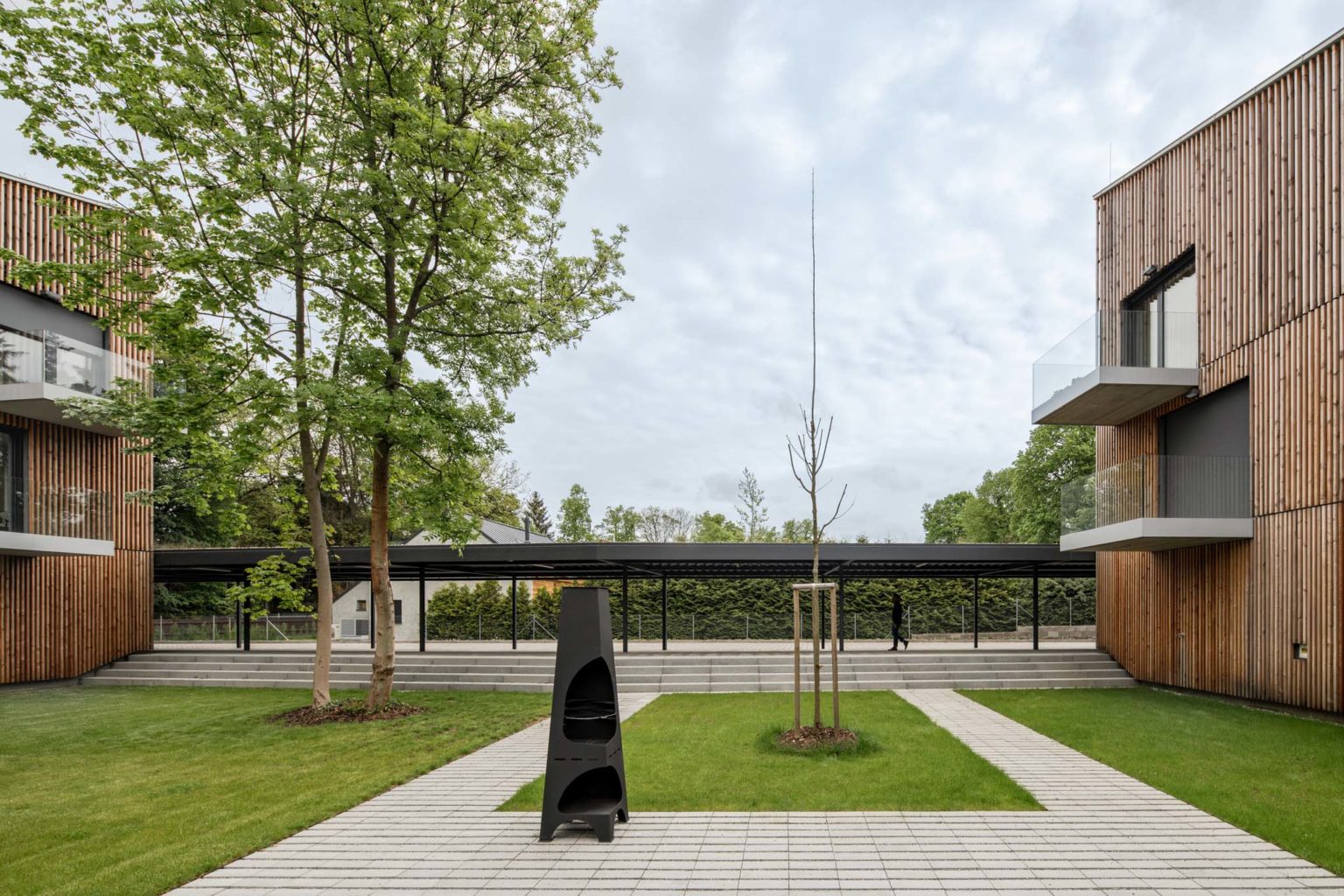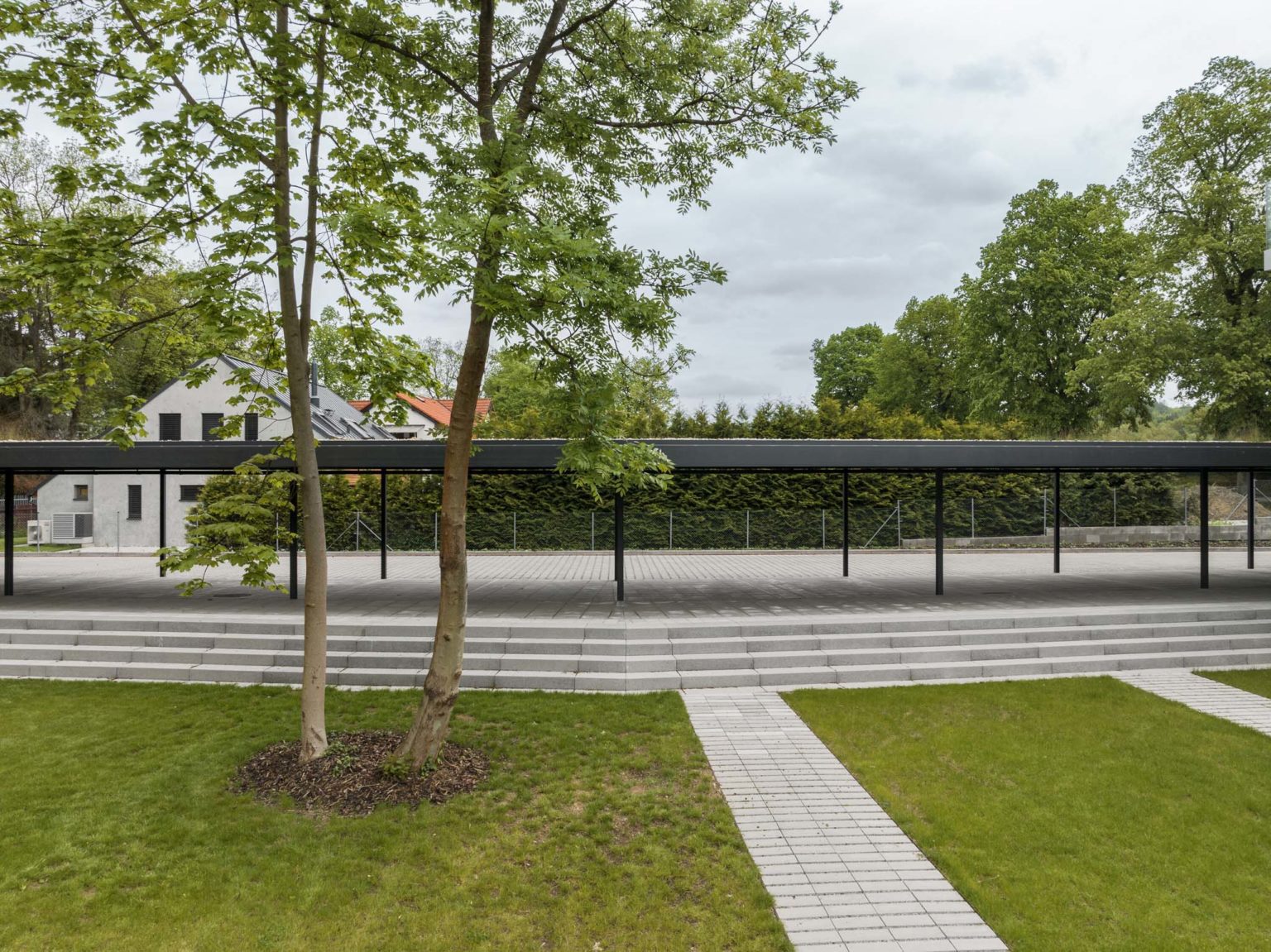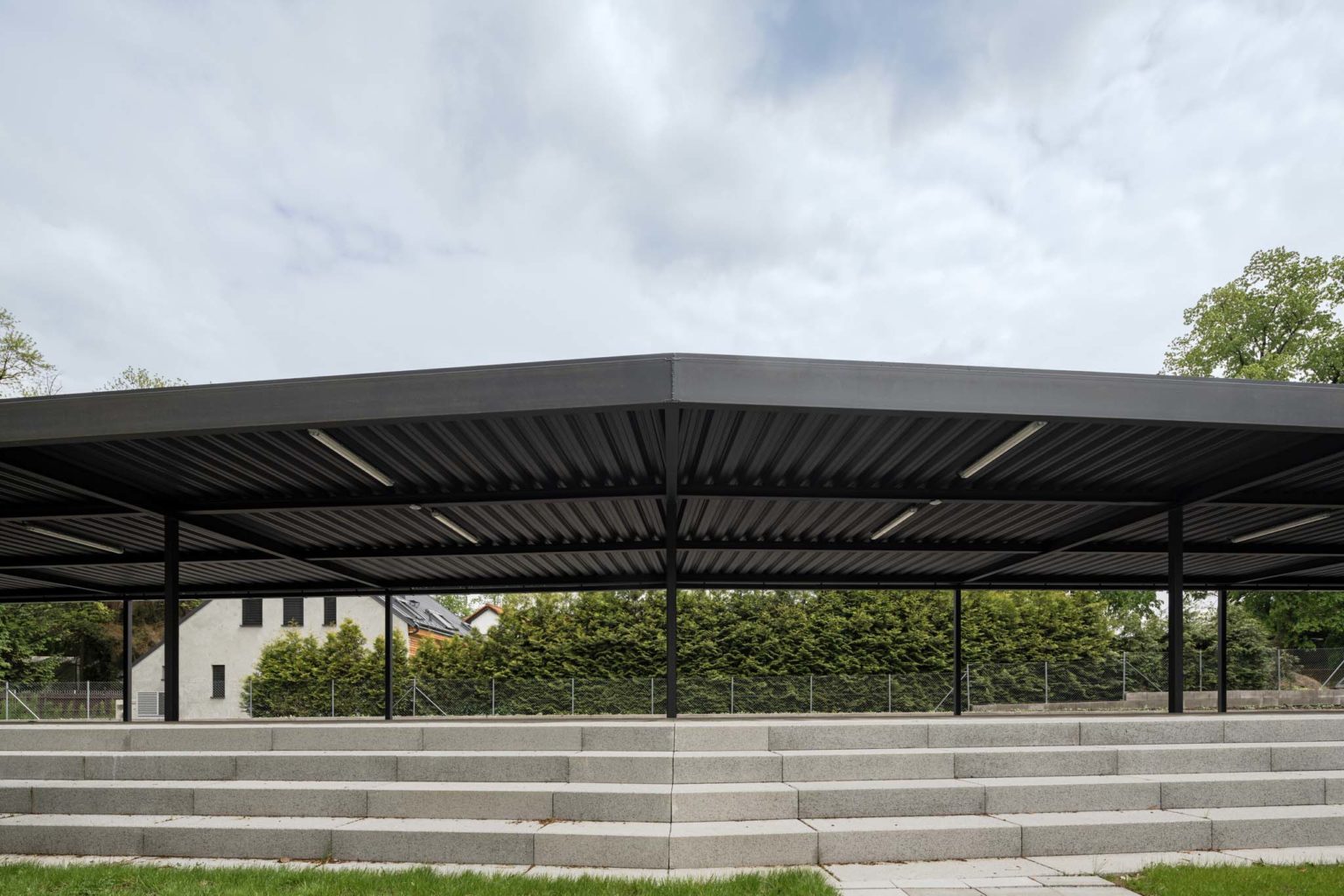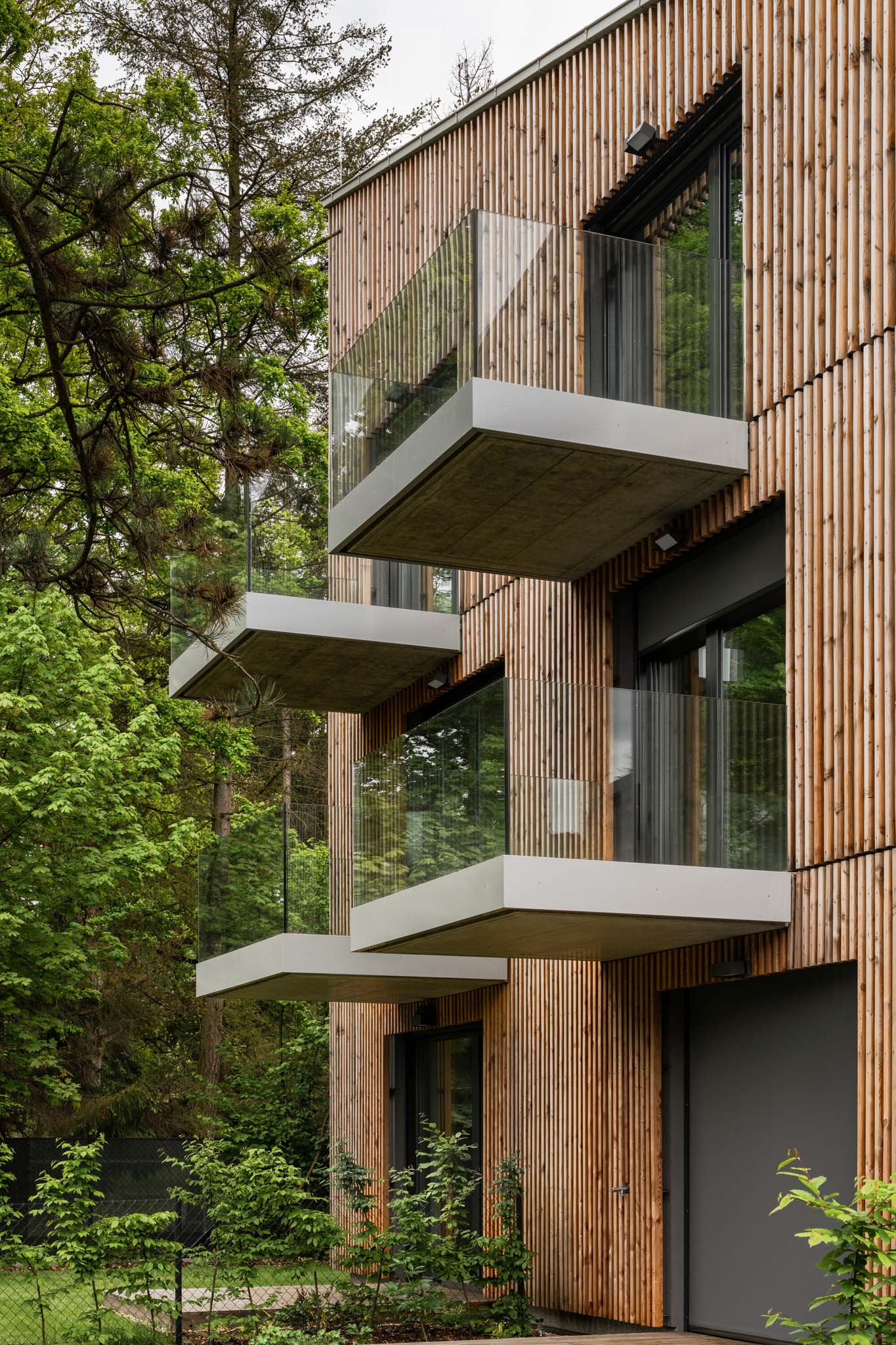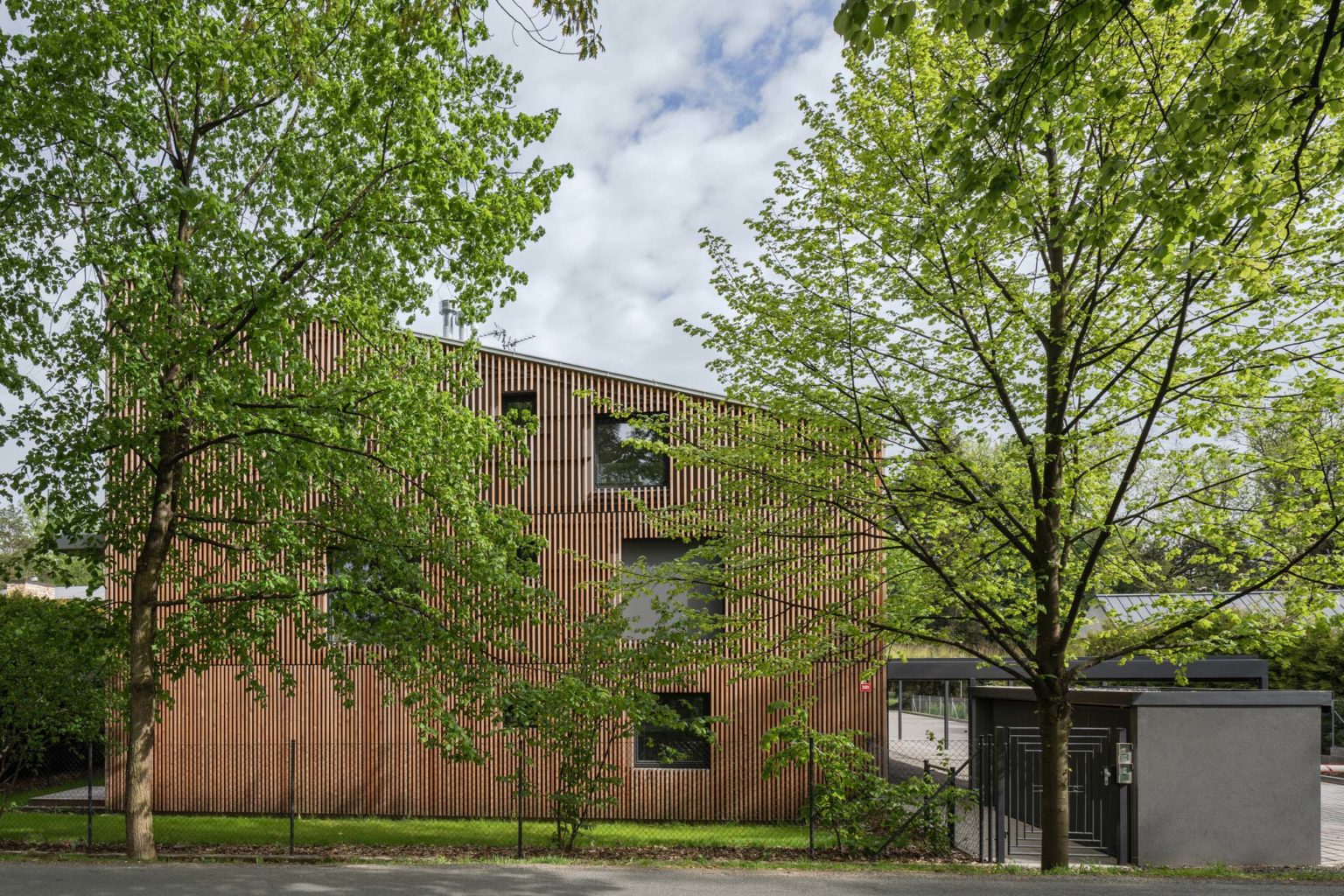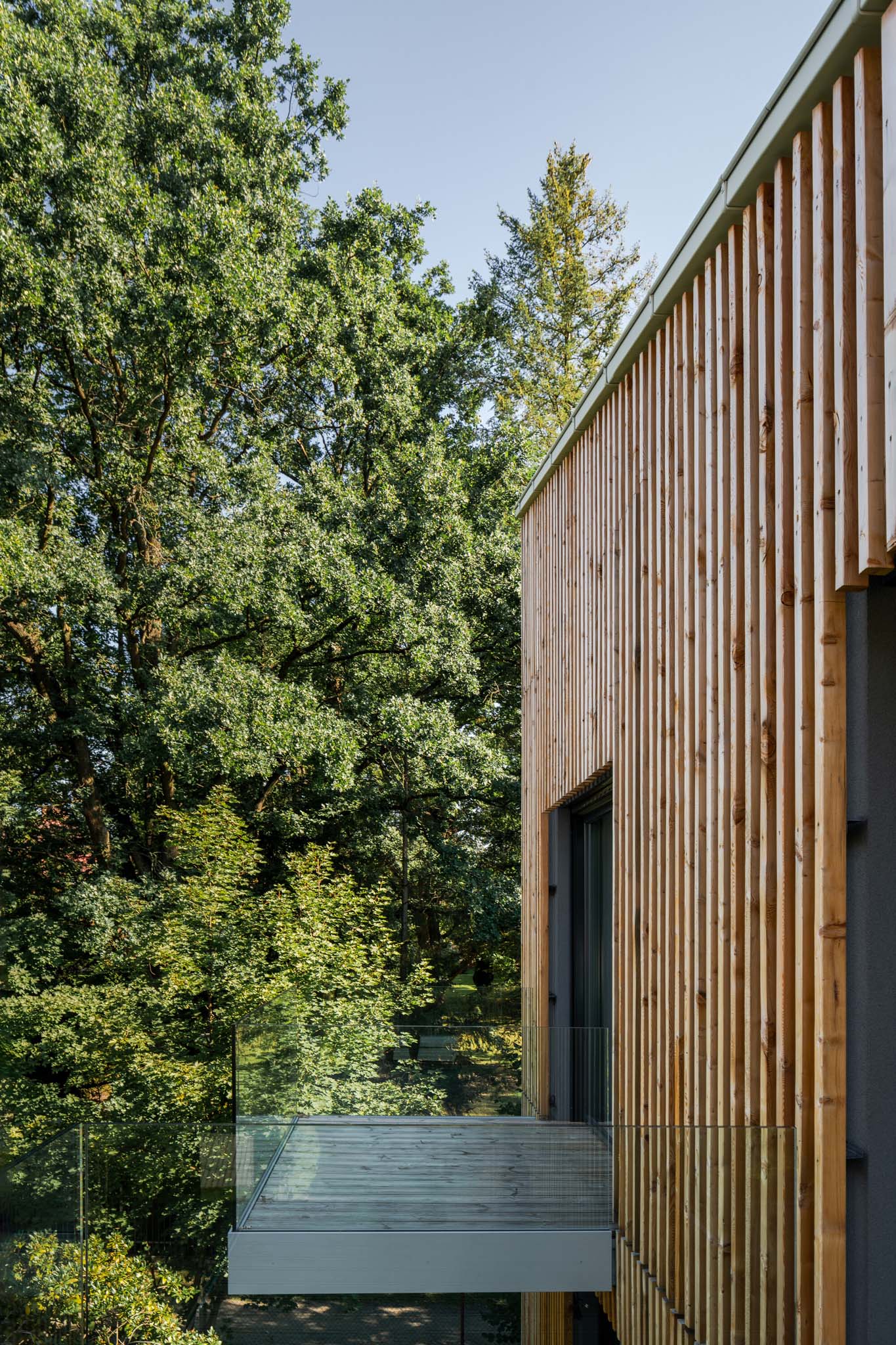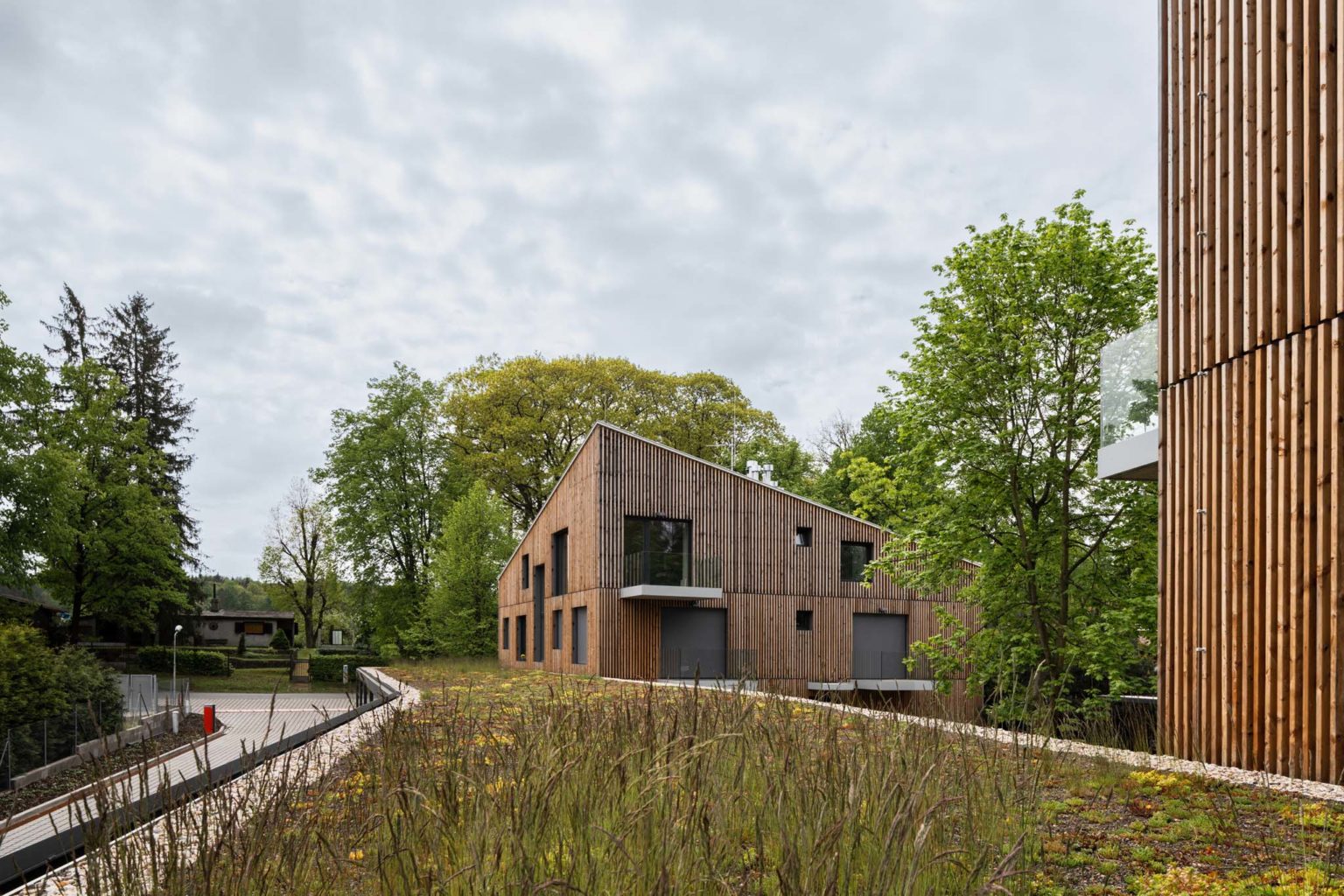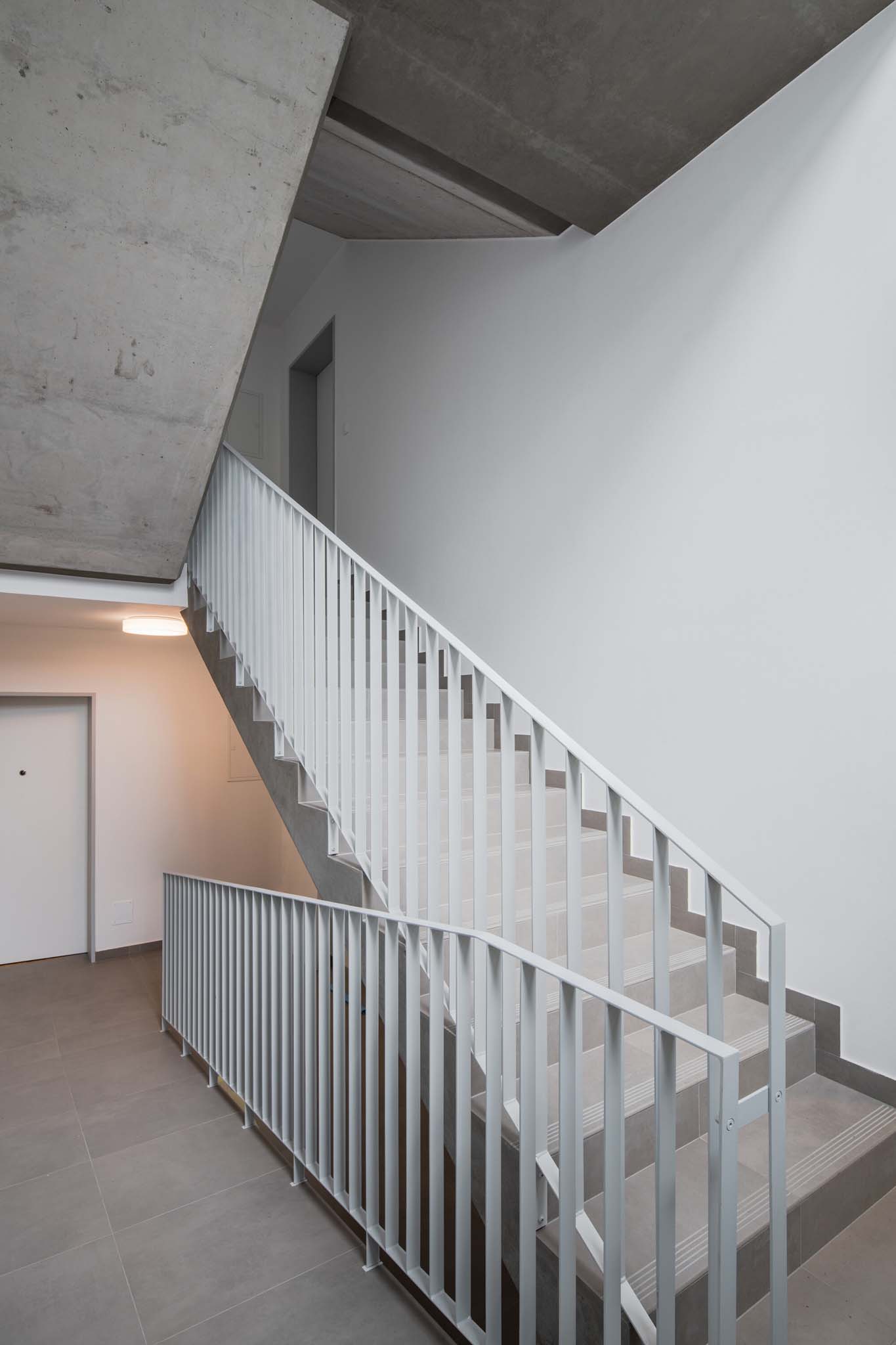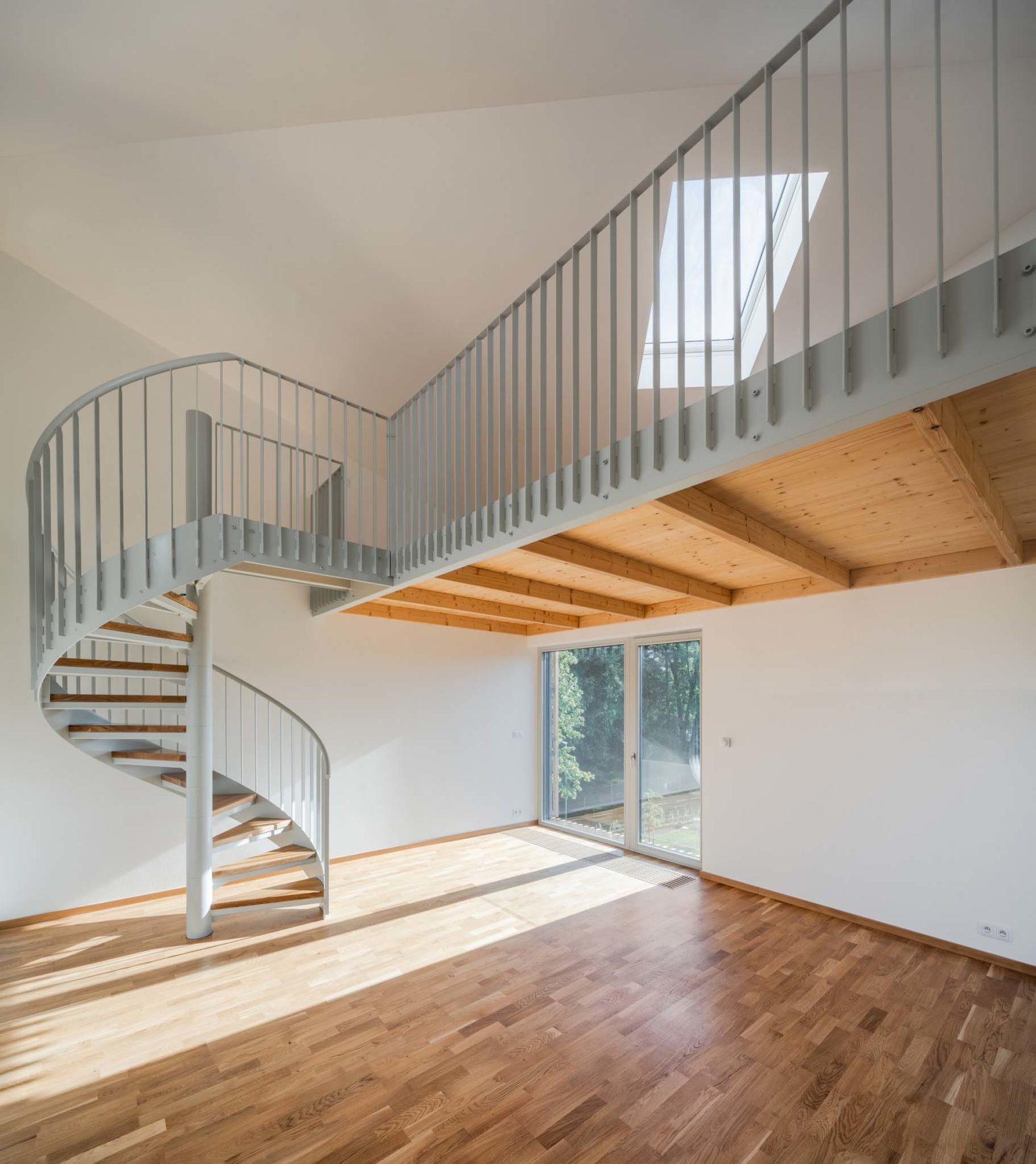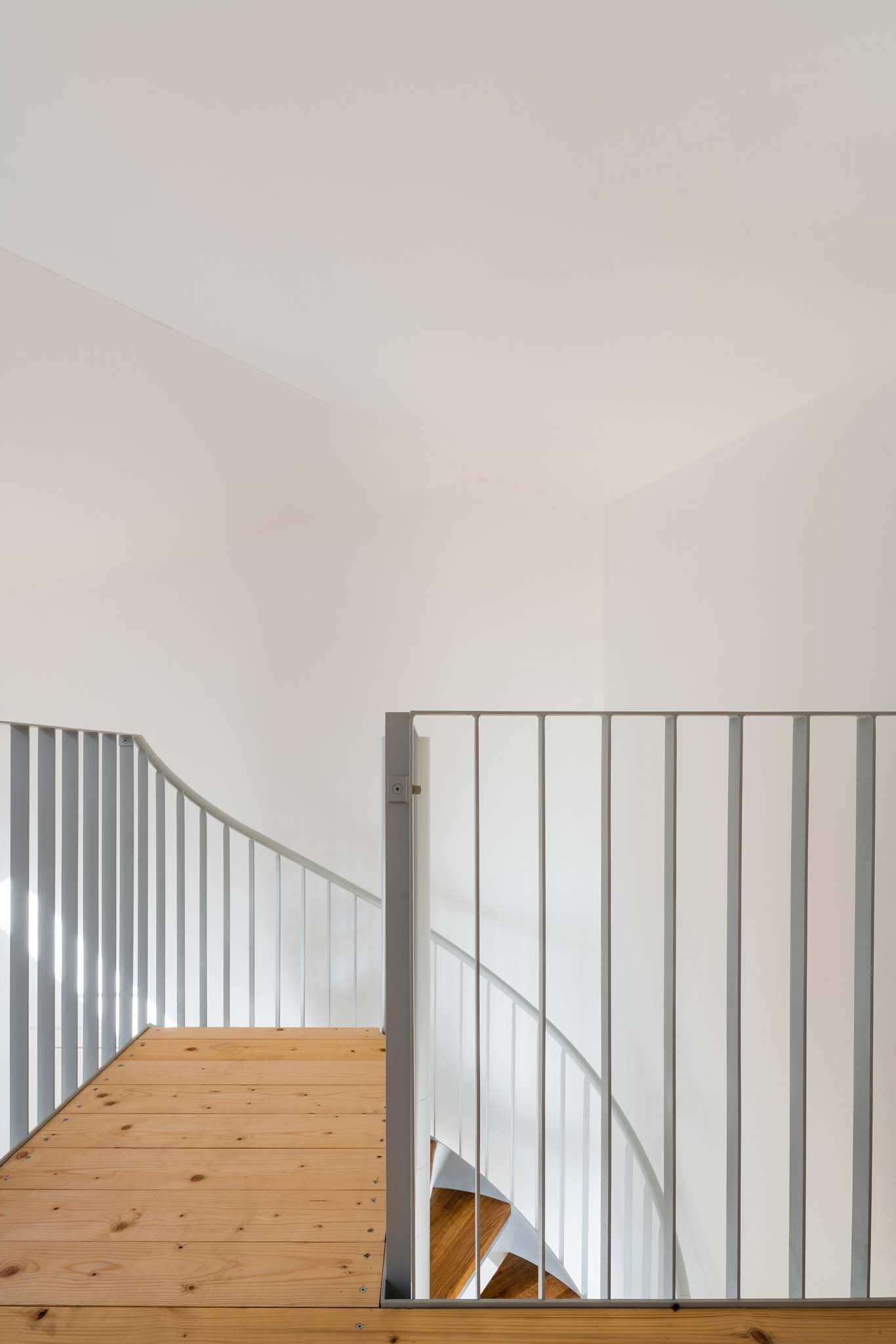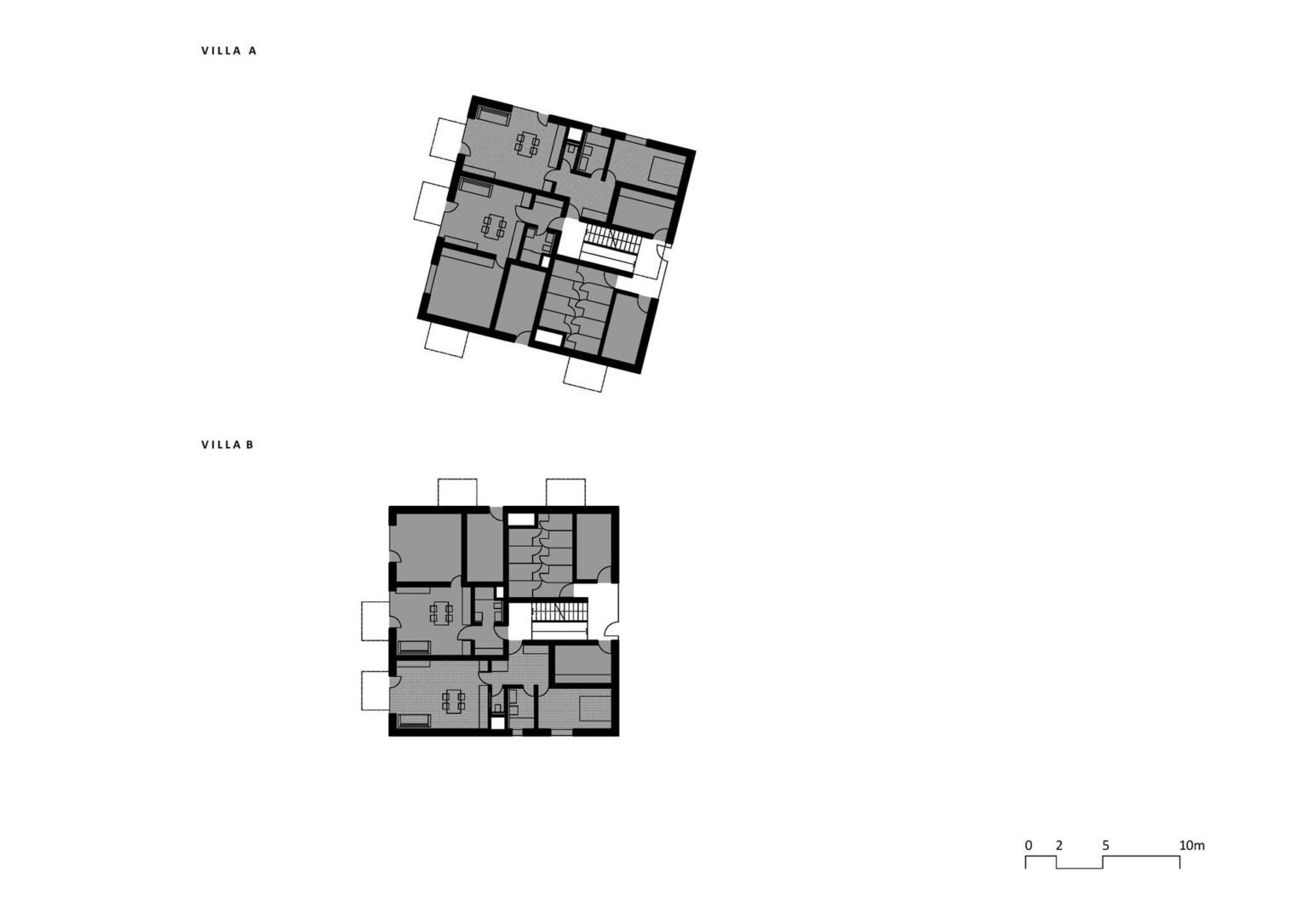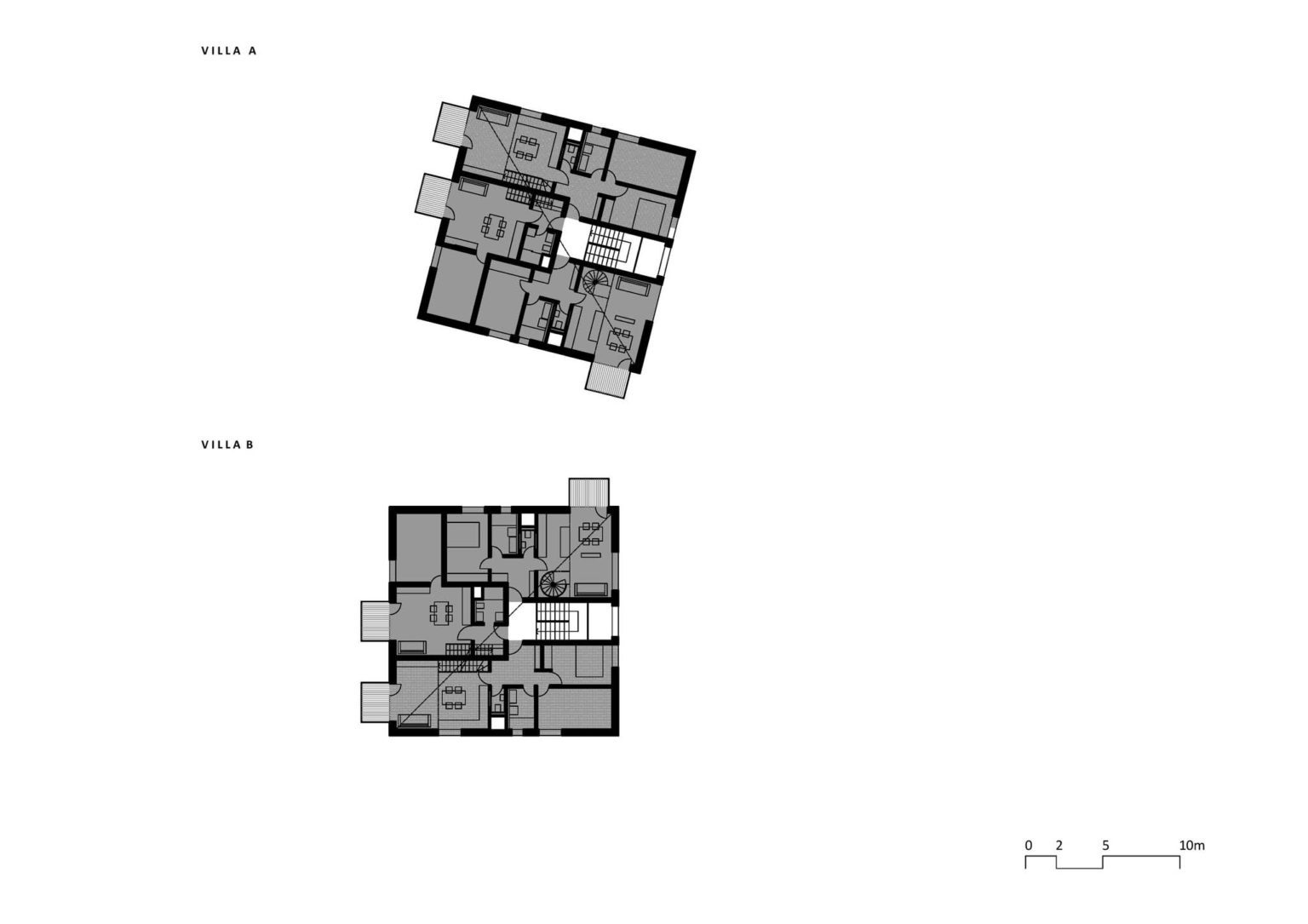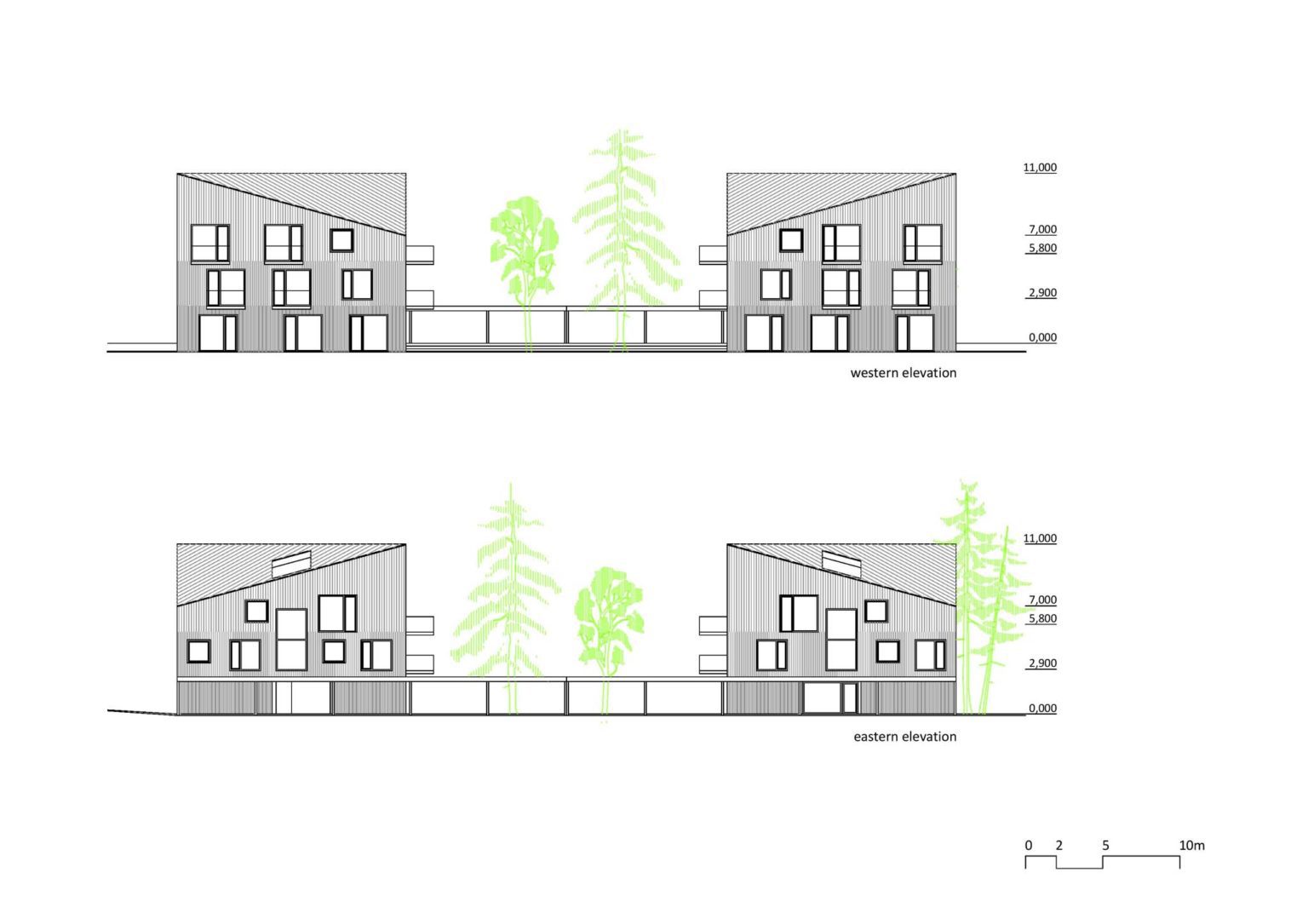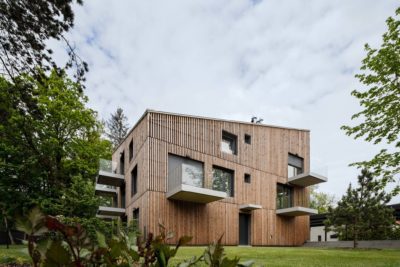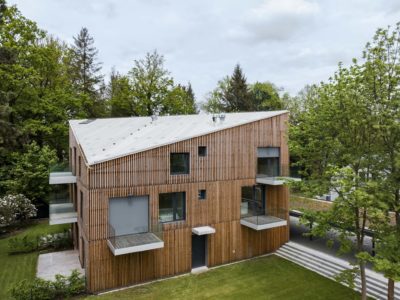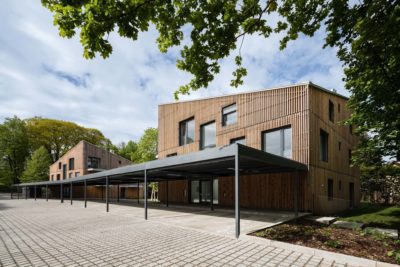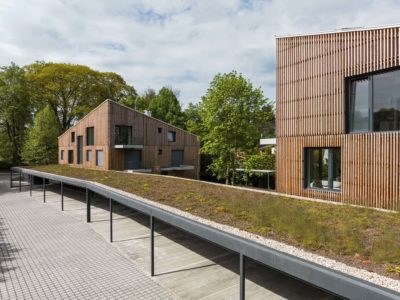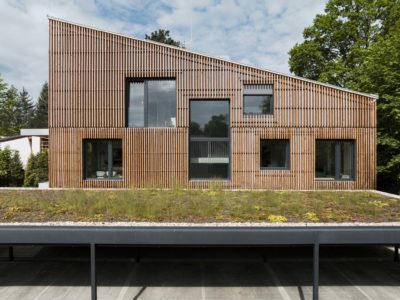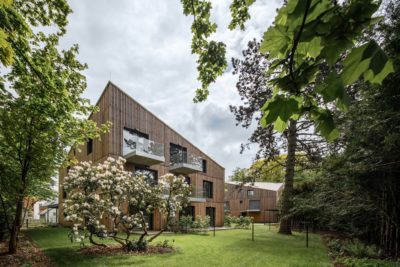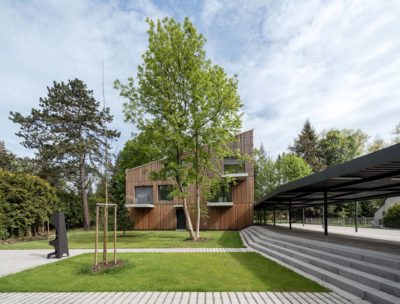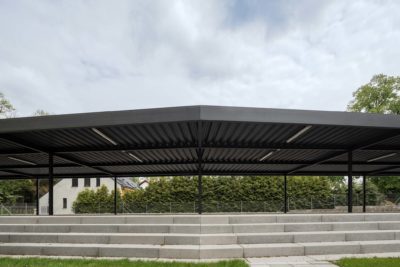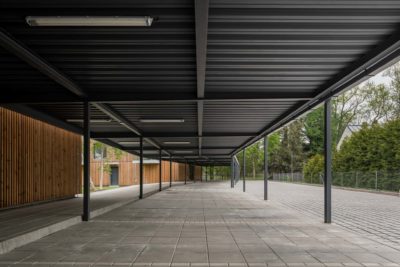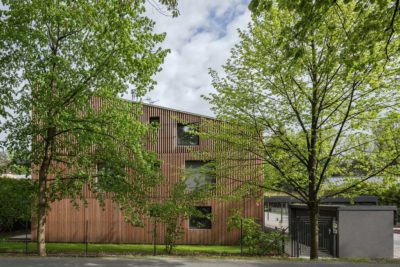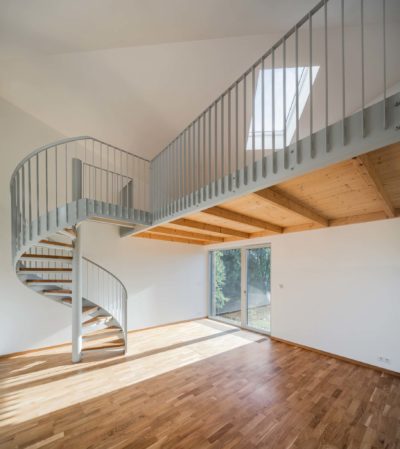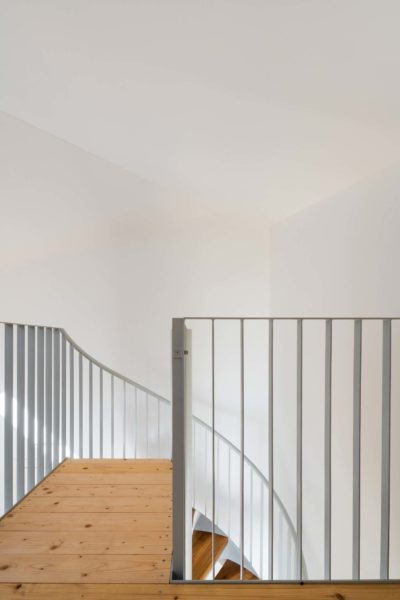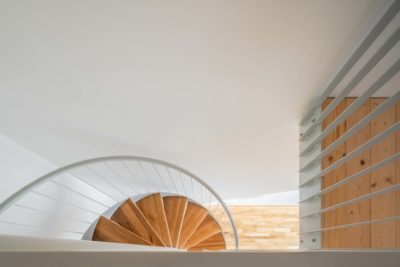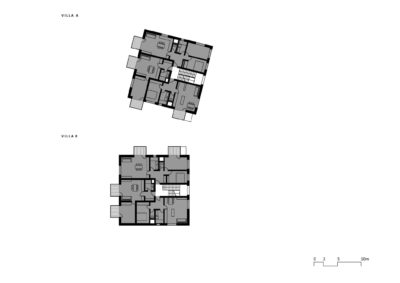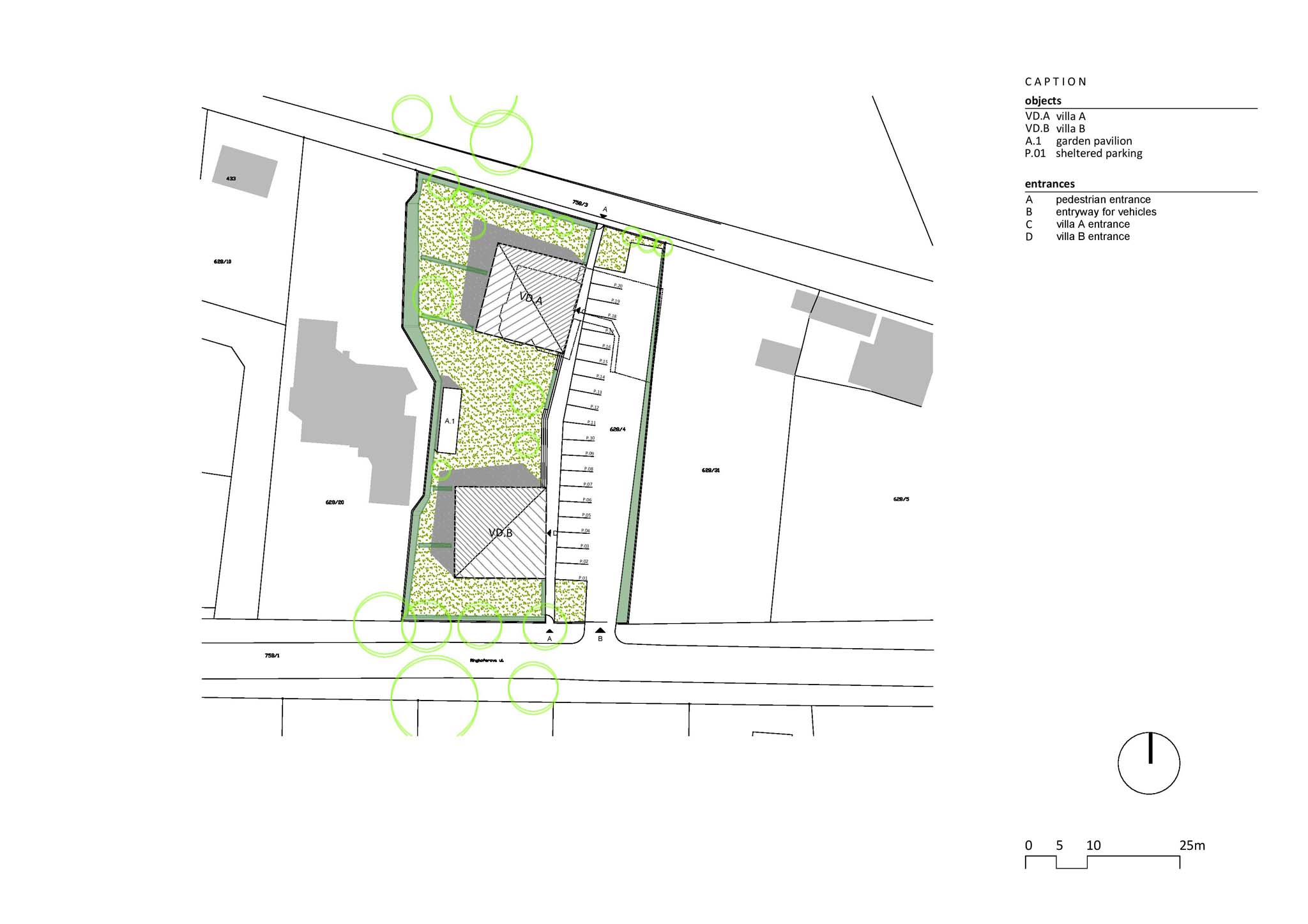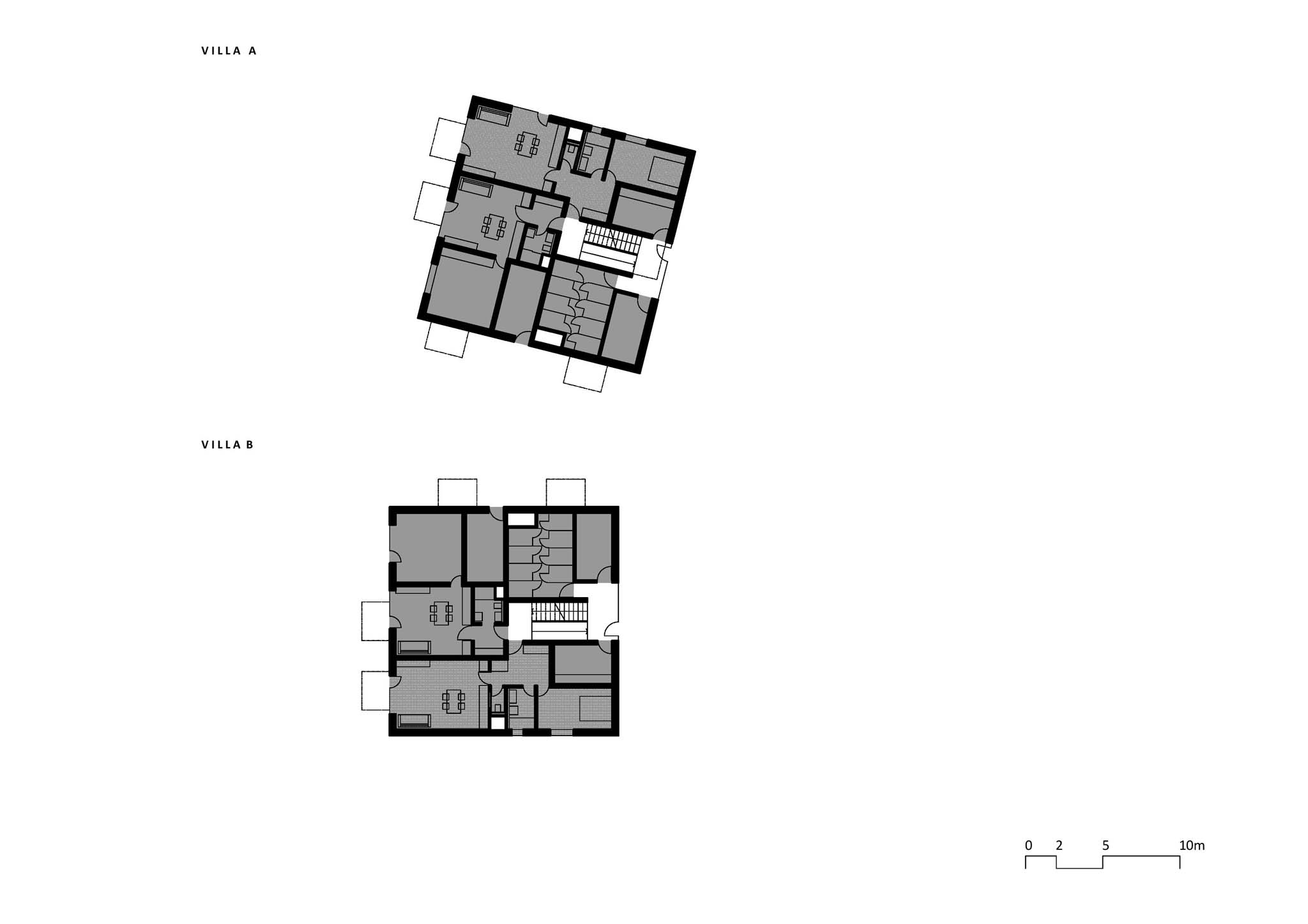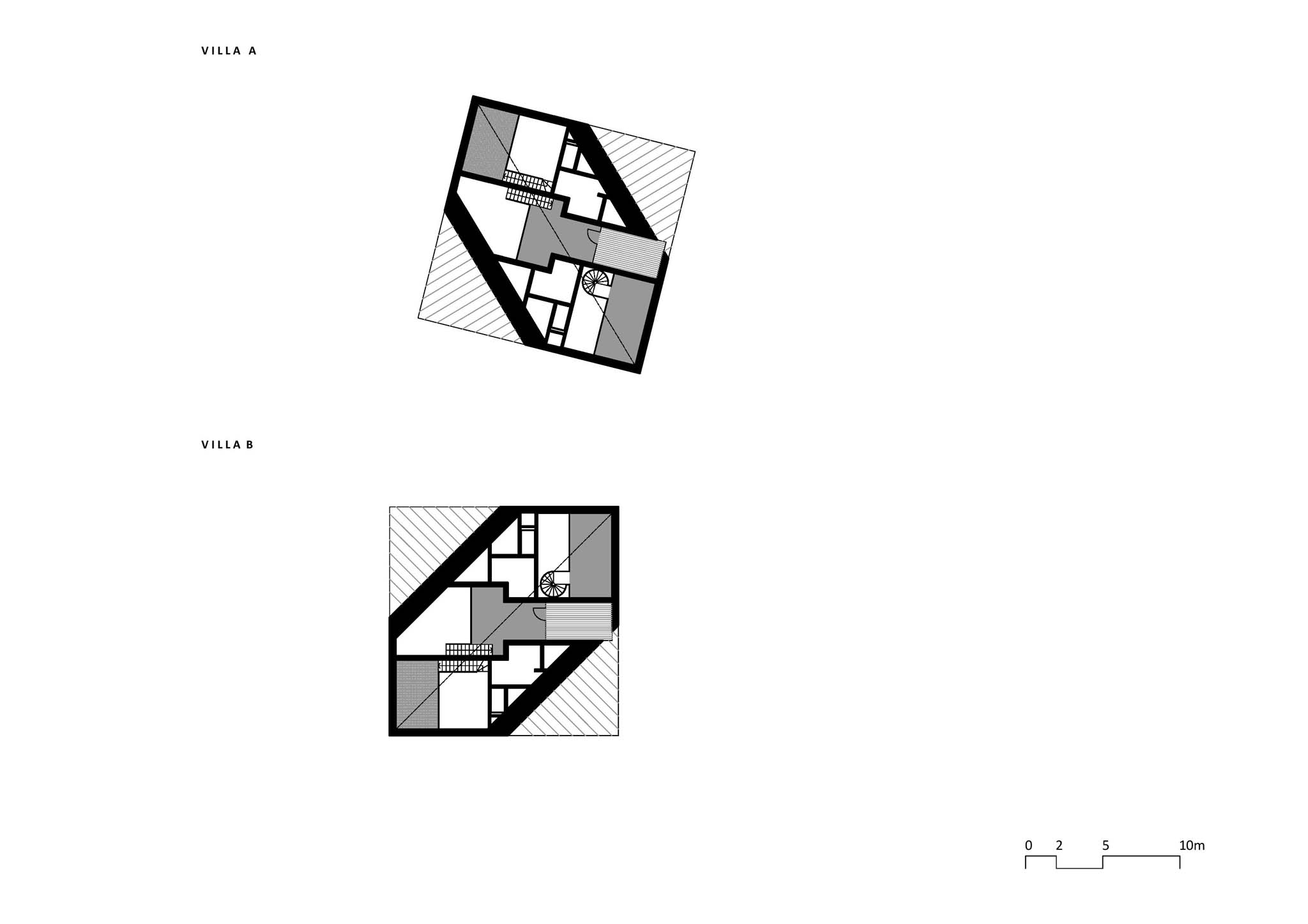Project Credits & Specs
- Architecture: NEW HOW architects
- Photography: Petr Polák
- Location: Kamenice, Czech Republic
- Area: 1 815 m2
- Year: 2022
More
- Lead Architect: David Zámečník
- Landscape Architecture: Atelier Partero
- General Construction Contractor: Stavix
- Steel and Glass Railings Contractor: Alia system
- Garden Contractor: Landeco
- Extensive Green Roof: Greenville
- Client: Viladomy Kamenice
- Area: Built-up area: 453 m2; Usable floor area: 1 262 m2; Plot size: 2 564 m2
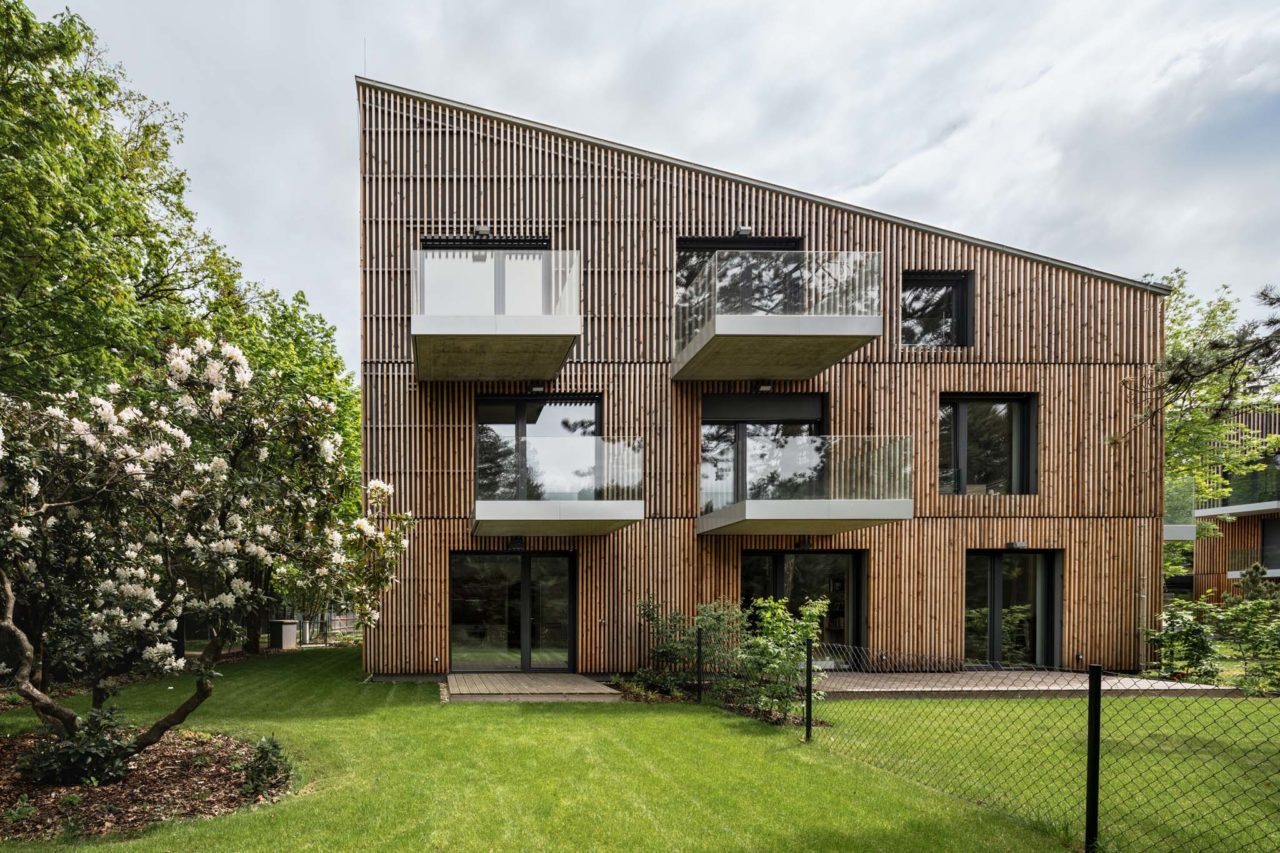
Project Description
In recent years, the village of Kamenice has experienced an influx of residents and the associated construction boom. The original village is being urbanized and urban-type architecture is emerging, especially in the center of the village. The proposed plot is located very close to the center of Kamenice village, next to the main urban axis of the village – Ringhofferova Street. The surrounding development has a diverse character – there are family houses, cottages, and apartment buildings. On the north side, the plot is adjacent to the main pedestrian route that runs through the entire village. The two villas thus create an imaginary gateway to the center of Kamenice.


The shape of the plot is trapezoidal with longer sides parallel. The shorter ones, towards the roads, diverge. We used this geometric motif in the basic urban composition of the proposal and placed two almost identical square-plan buildings on the plot, with their external facades parallel to the shorter sides of the plot. The buildings themselves are rotated by 13 degrees from each other. An irregular communal space with original mature trees is created between them. The principle of rotating the buildings is also reflected in the shape of the curved parking space, the roof, and the funnel-like widening access road.


In terms of urban operation and function, the site is divided into longitudinal strips with different functions. Along the eastern perimeter, a road leads to the parking lot. On the other side of the parking lot, there is a pedestrian walkway that traverses the entire site from north to south, connecting Ringhoffer Street to the pedestrian walkway on the north. The western strip of the plot is the widest and is used for private housing. The central space with original mature trees evokes the feeling of a park between two residences and creates a semi-private space serving the community life of the residents. Private front gardens are designed in the peripheral parts of the residential zone, in direct connection with the ground-floor apartments.
The central idea of the project was how to place two apartment buildings in an environment of mature greenery, which would not exceed the surrounding buildings and would be in harmony with their surroundings. Two similar villas with square floor plans and diagonally pitched roofs sensitively respond to the surrounding buildings and establish a universal principle in the unorganized development of the village’s wider center. The dynamic facades and the wooden cladding evoke a refined and welcoming expression of the new buildings, materially connected to the surroundings and nature. The villas are designed as single-staircase buildings – a typology where all apartments on a floor are accessible from one vertical communication space. Both villas have three floors, with the top floor as an attic. There are 8 apartments in each villa, ranging in size from 2+k’ette to 4+k’ette.
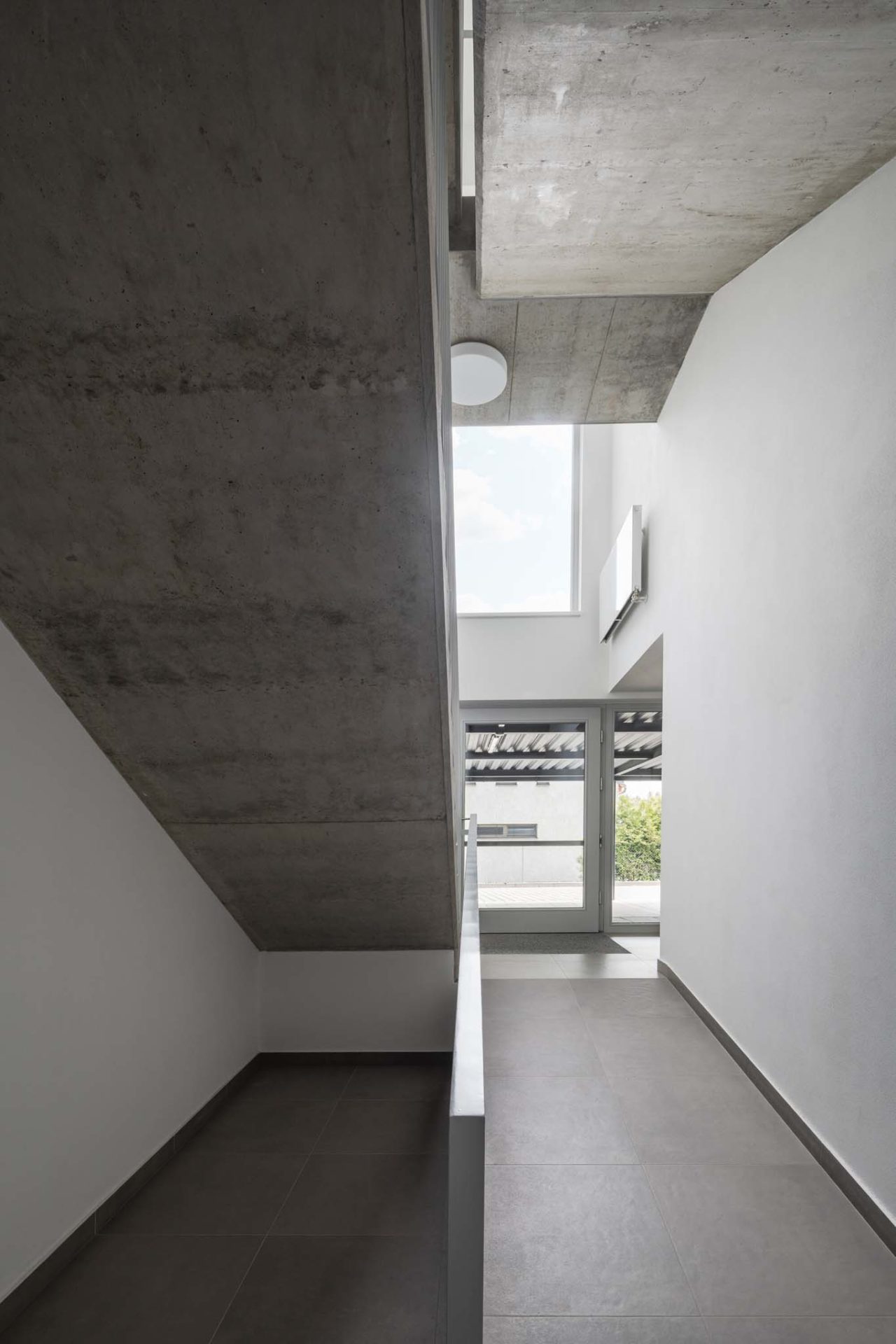
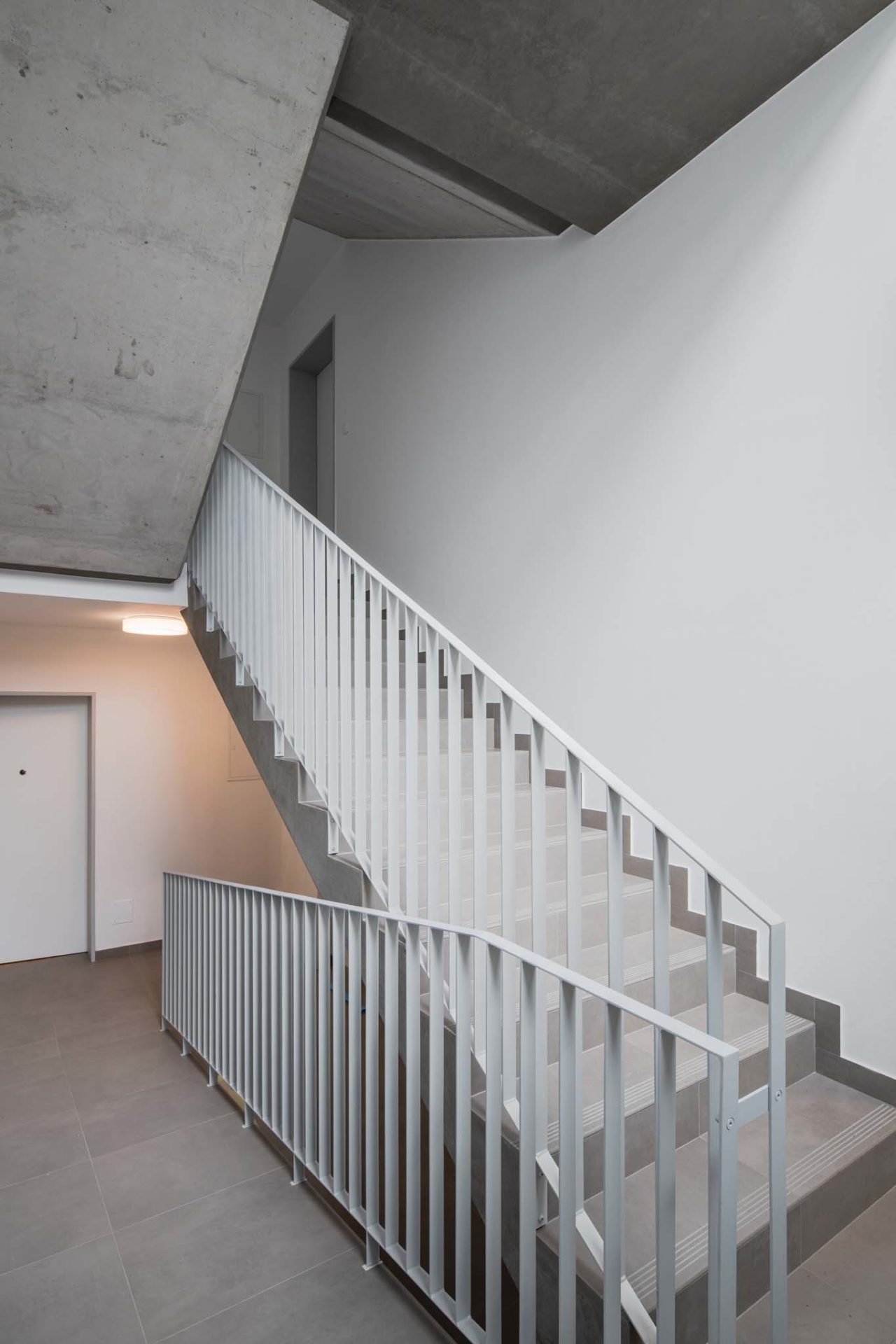
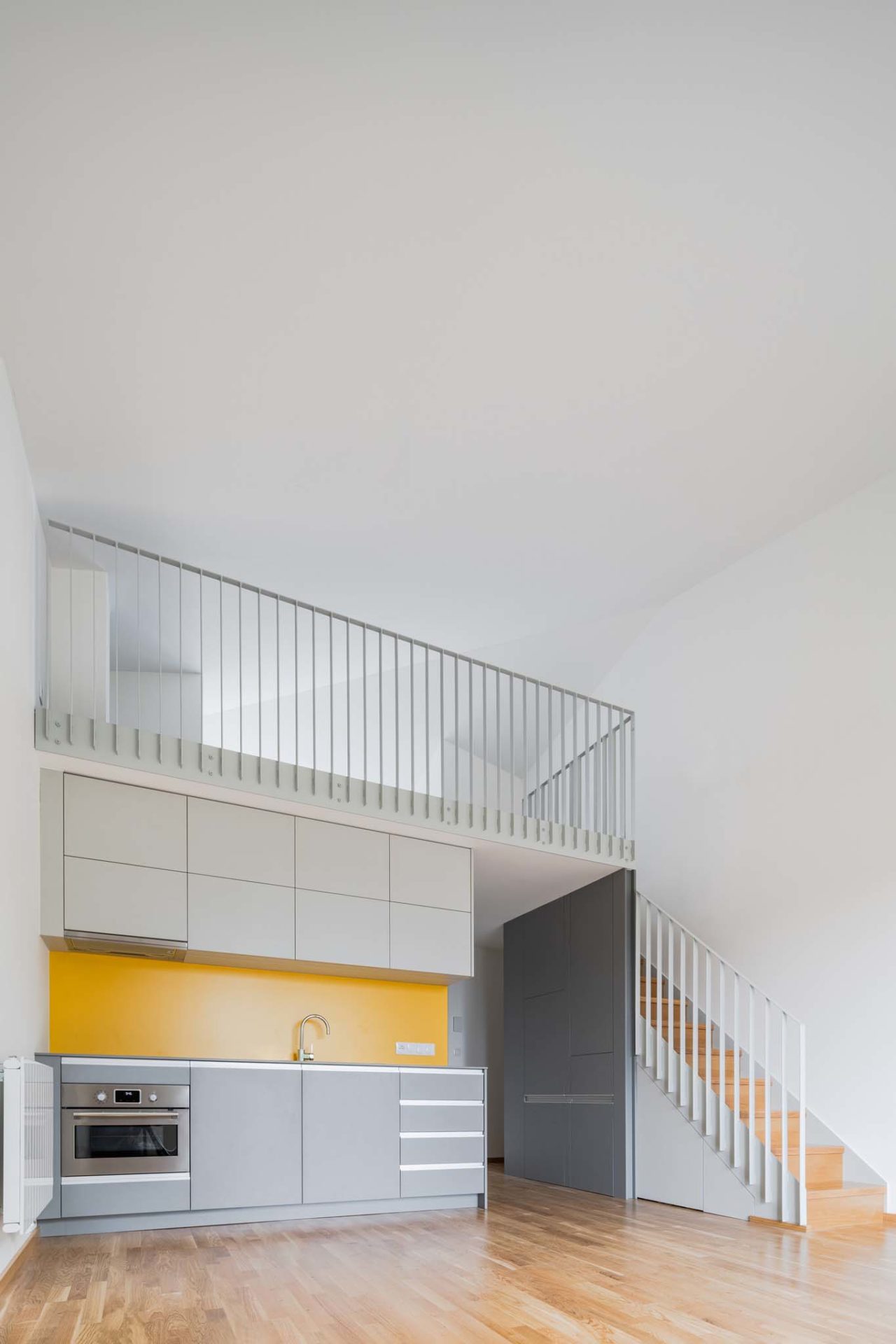
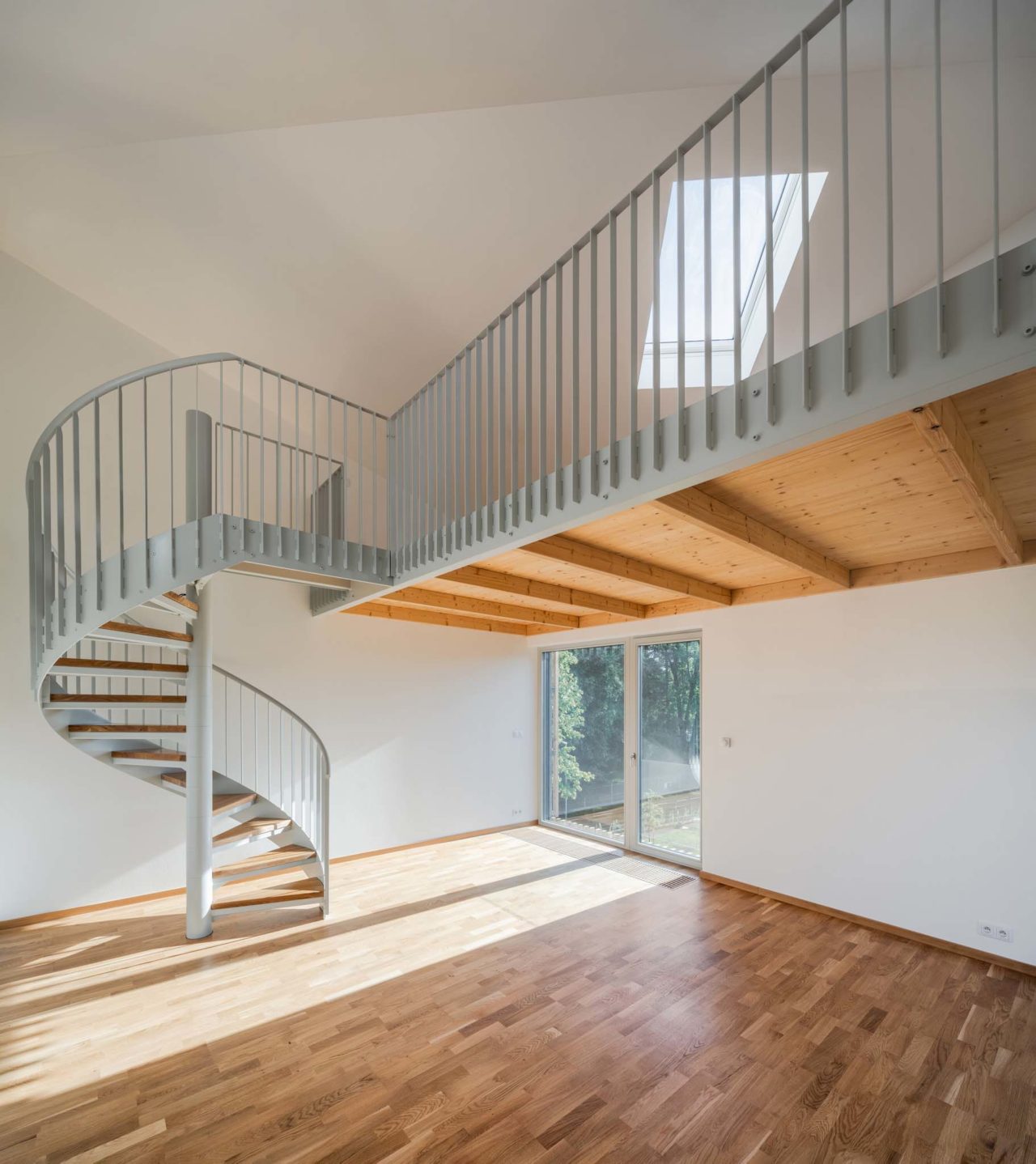
Horizontal structural elements of the buildings – strip footings, ceilings, balconies – are monolithic reinforced concrete, while the load-bearing walls are made of brick blocks. The roof structure, finished with a grey PVC membrane, is comprised of wooden rafters, supported by steel purlins. The external walls are insulated with mineral wool, coated with plaster, and completed with vertical wooden slats from Siberian larch. The covered parking space is made from steel profiles with trapezoidal sheet metal roofing. The roof is extensive green. The access road to the parking lots is designed from concrete grass blocks filled with fine gravel.


Materials
Reinforced concrete – strip footings, ceilings, balconies
Brick – load-bearing walls
Wood – roof rafters
Steel – roof purlins, parking
Trapezoidal sheet metal – parking roofing
Mineral wool – façade insulation
PVC membrane – roof
Plaster – façade
Siberian larch – façade cladding
Concrete grass block pavers – parking
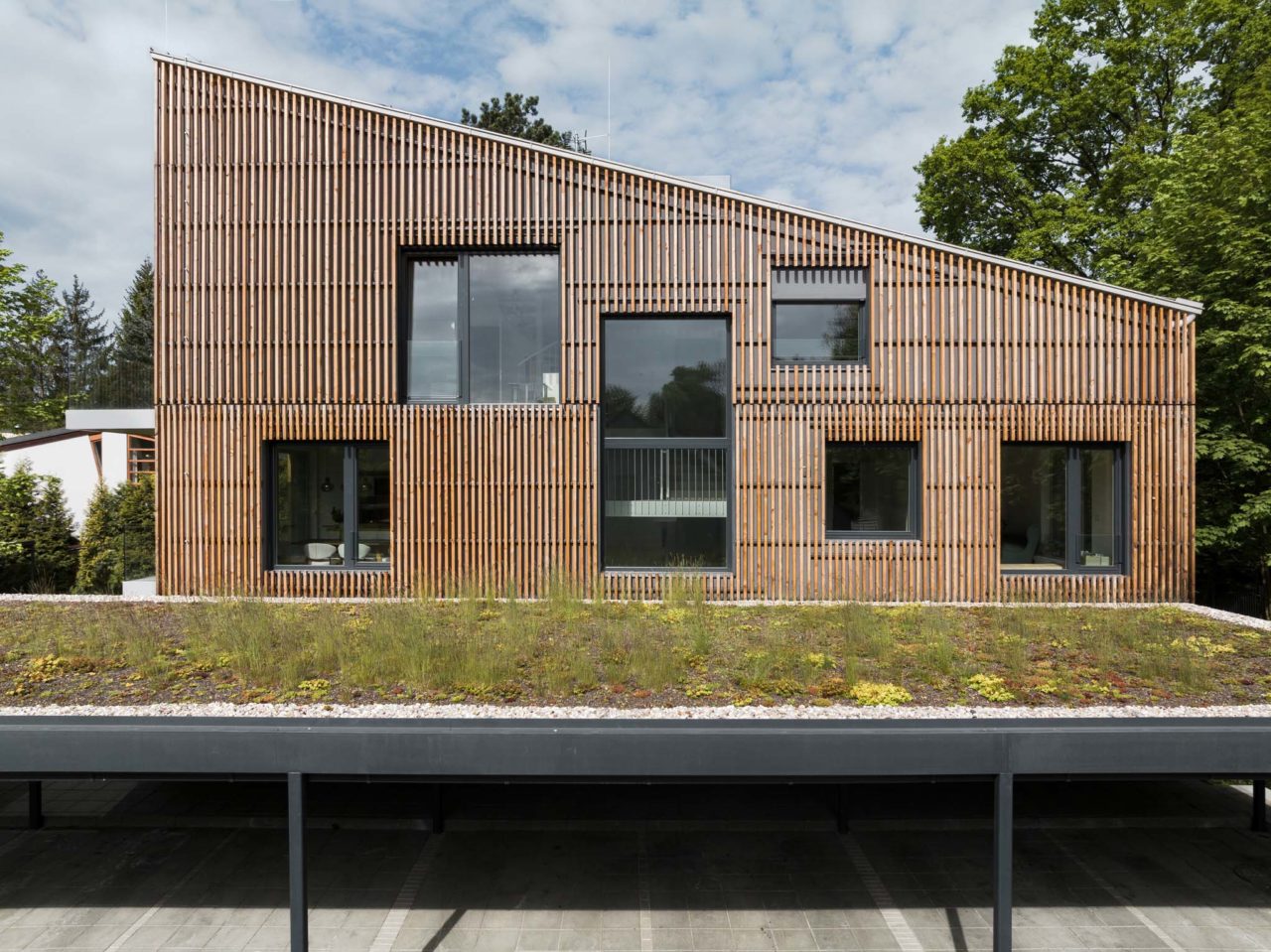
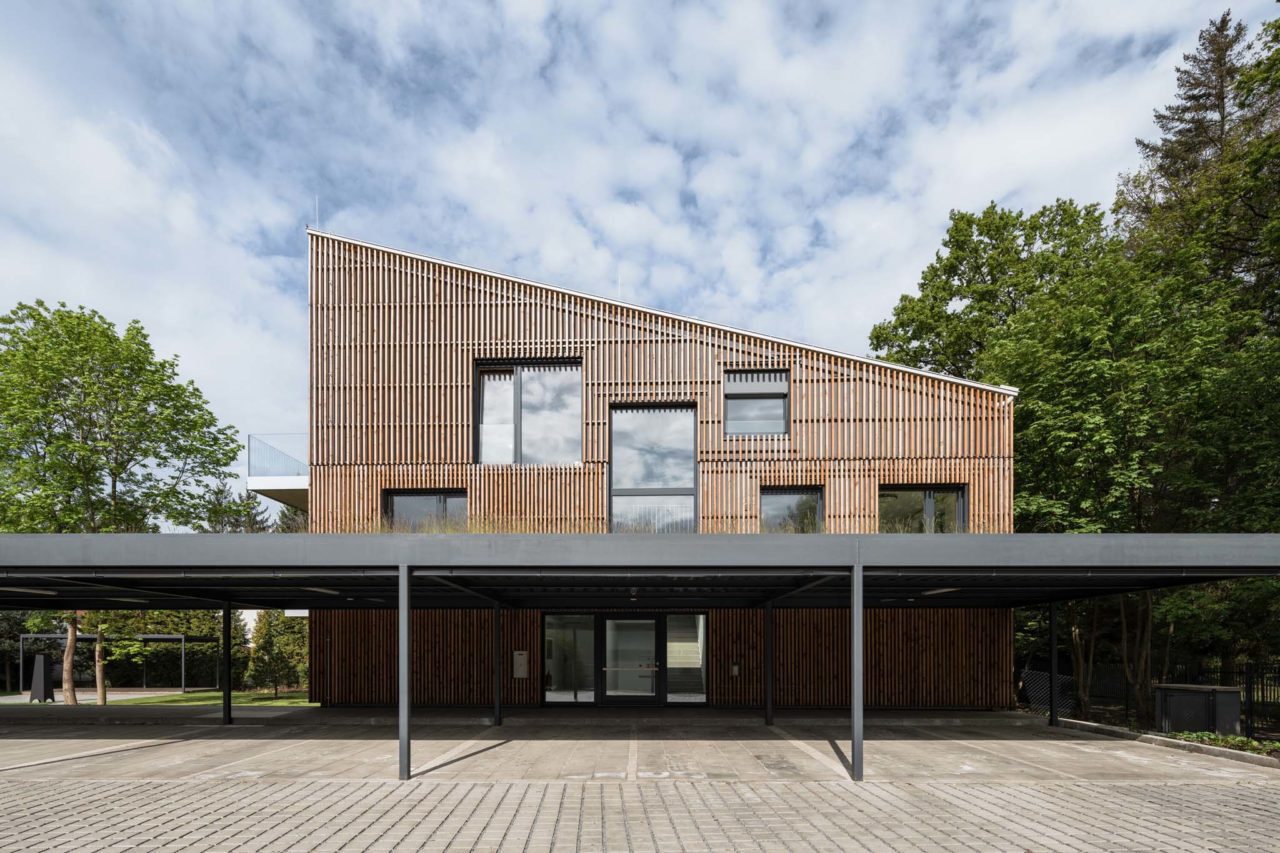

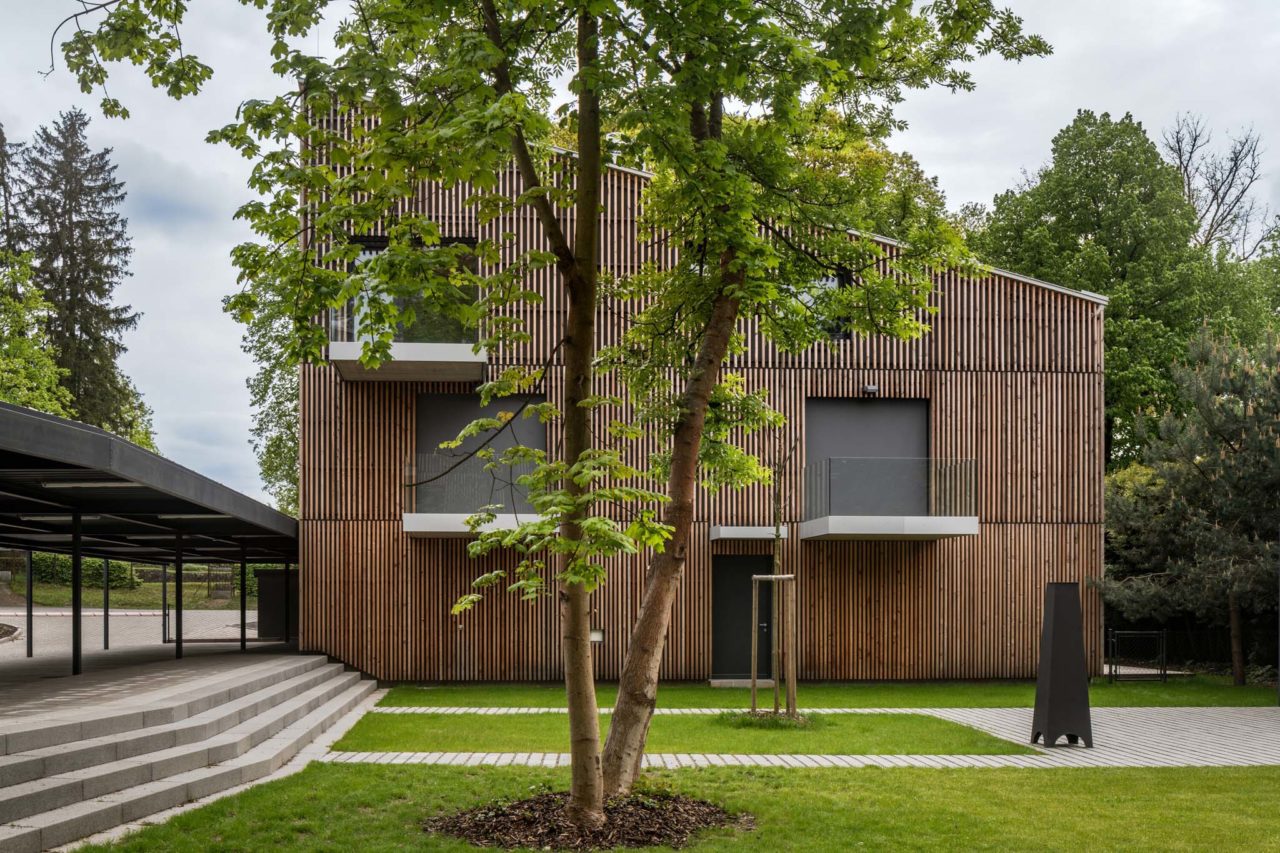



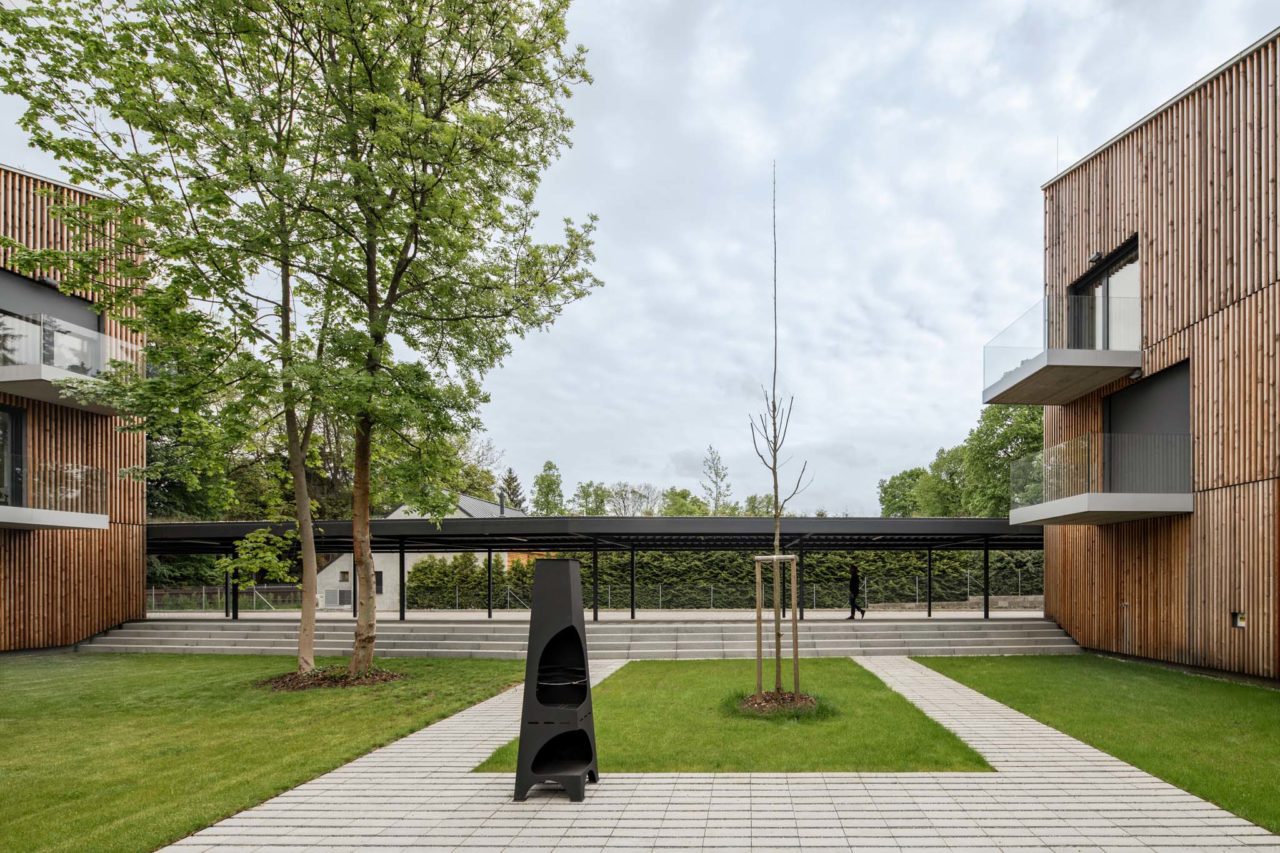


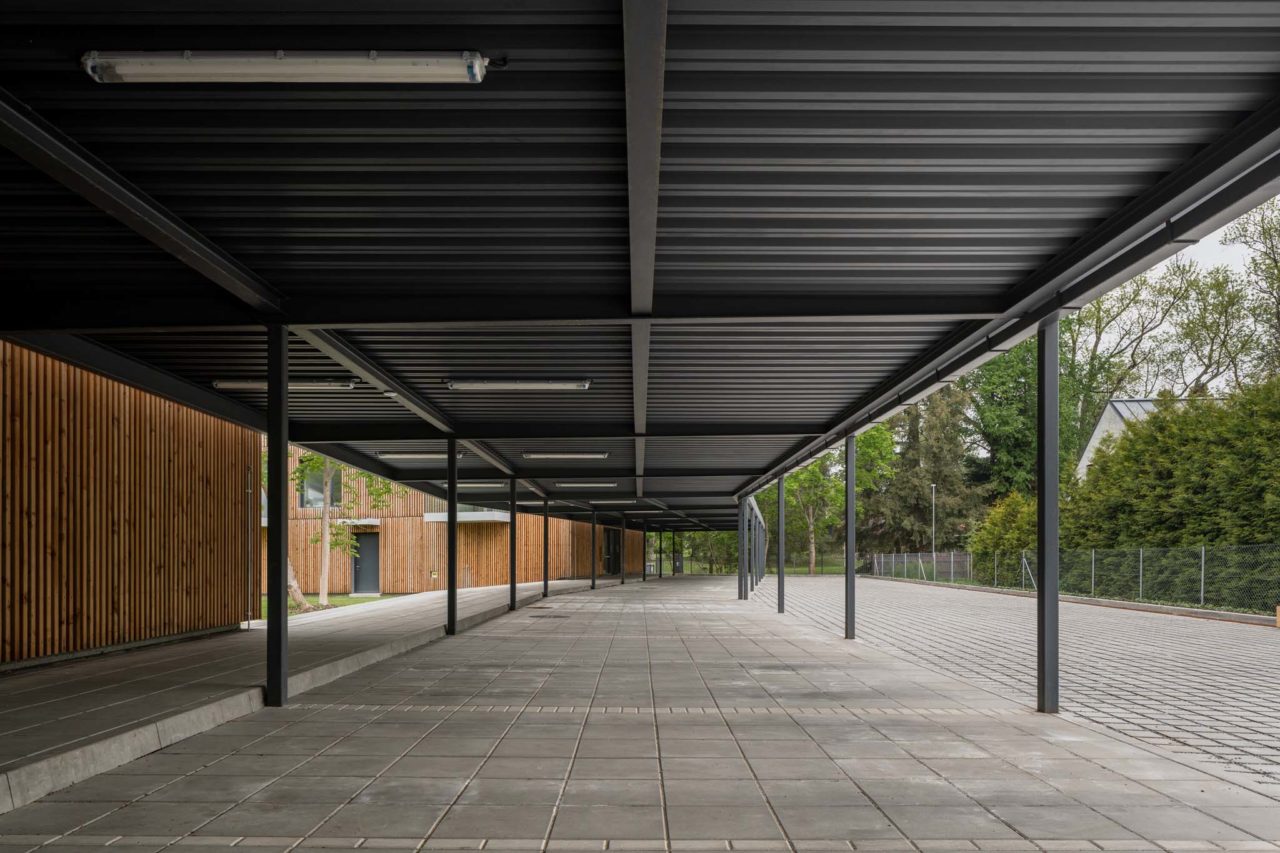
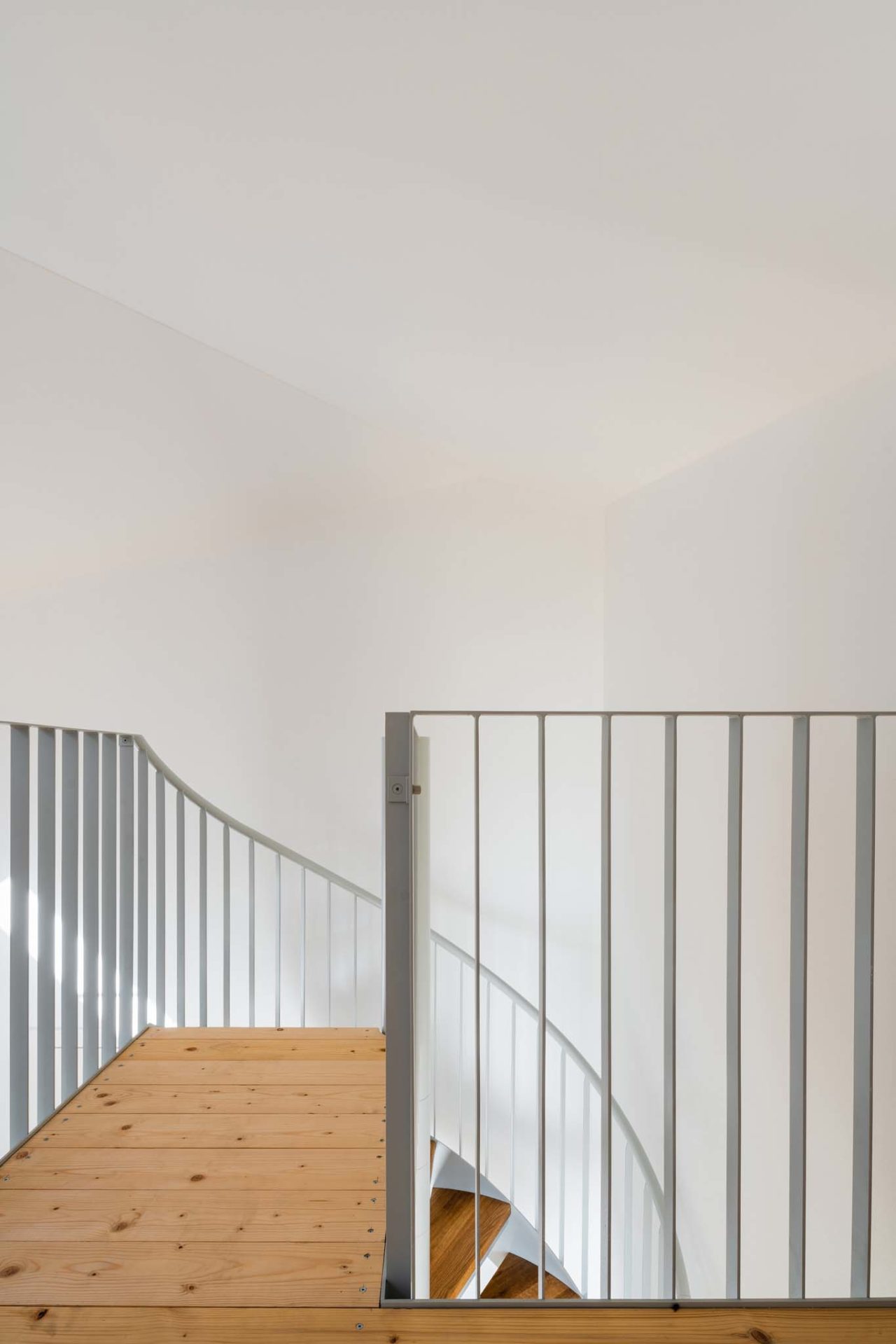

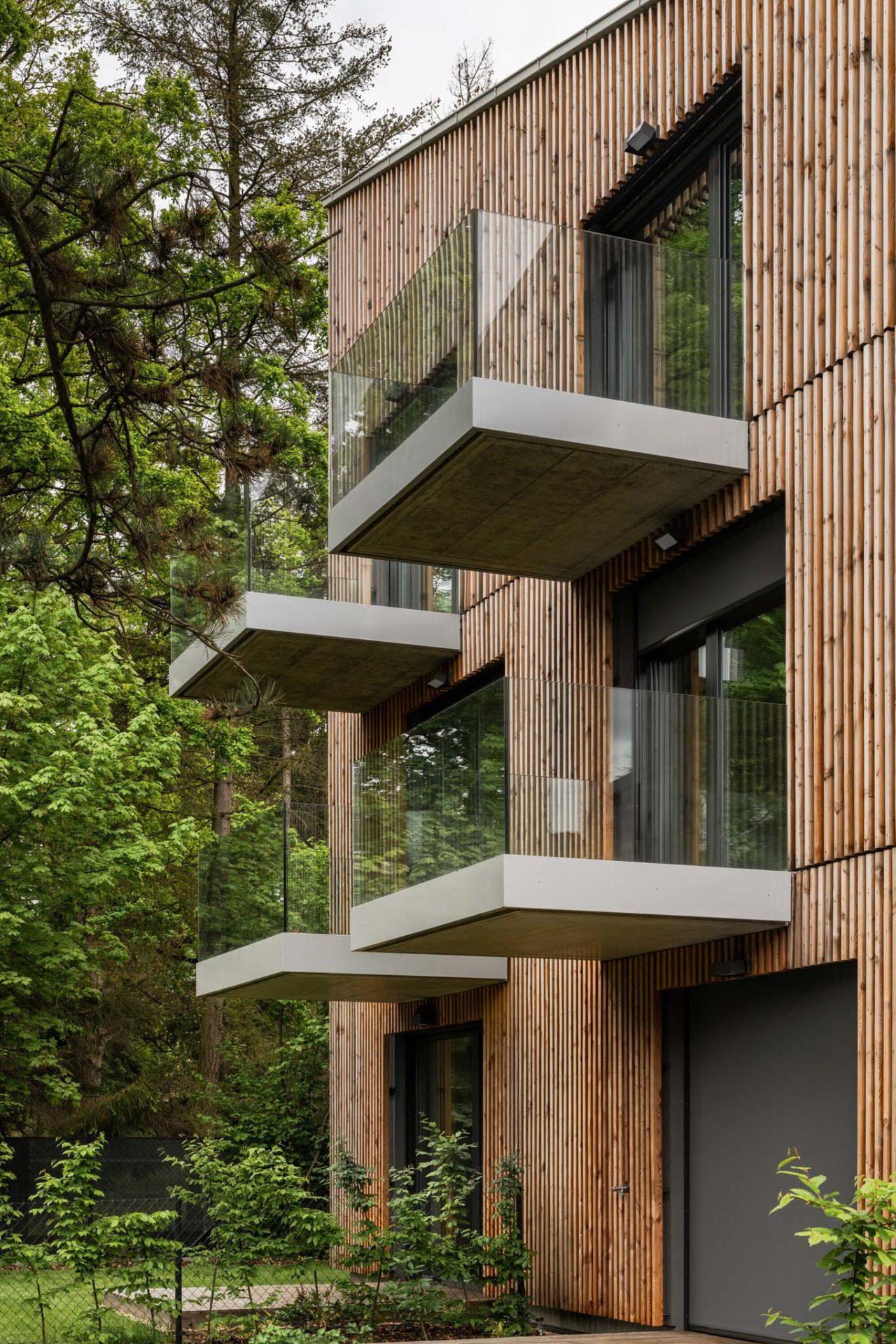
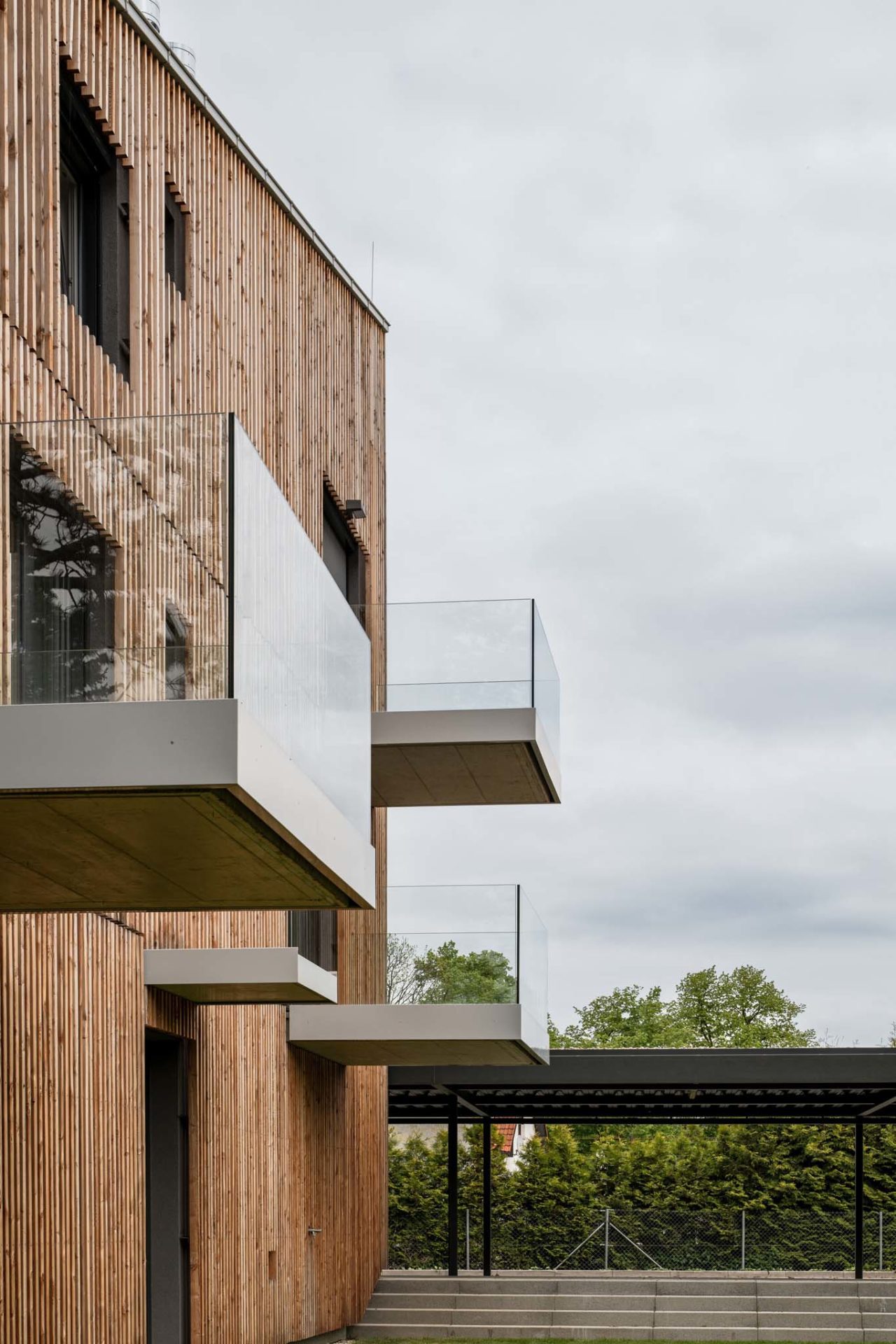



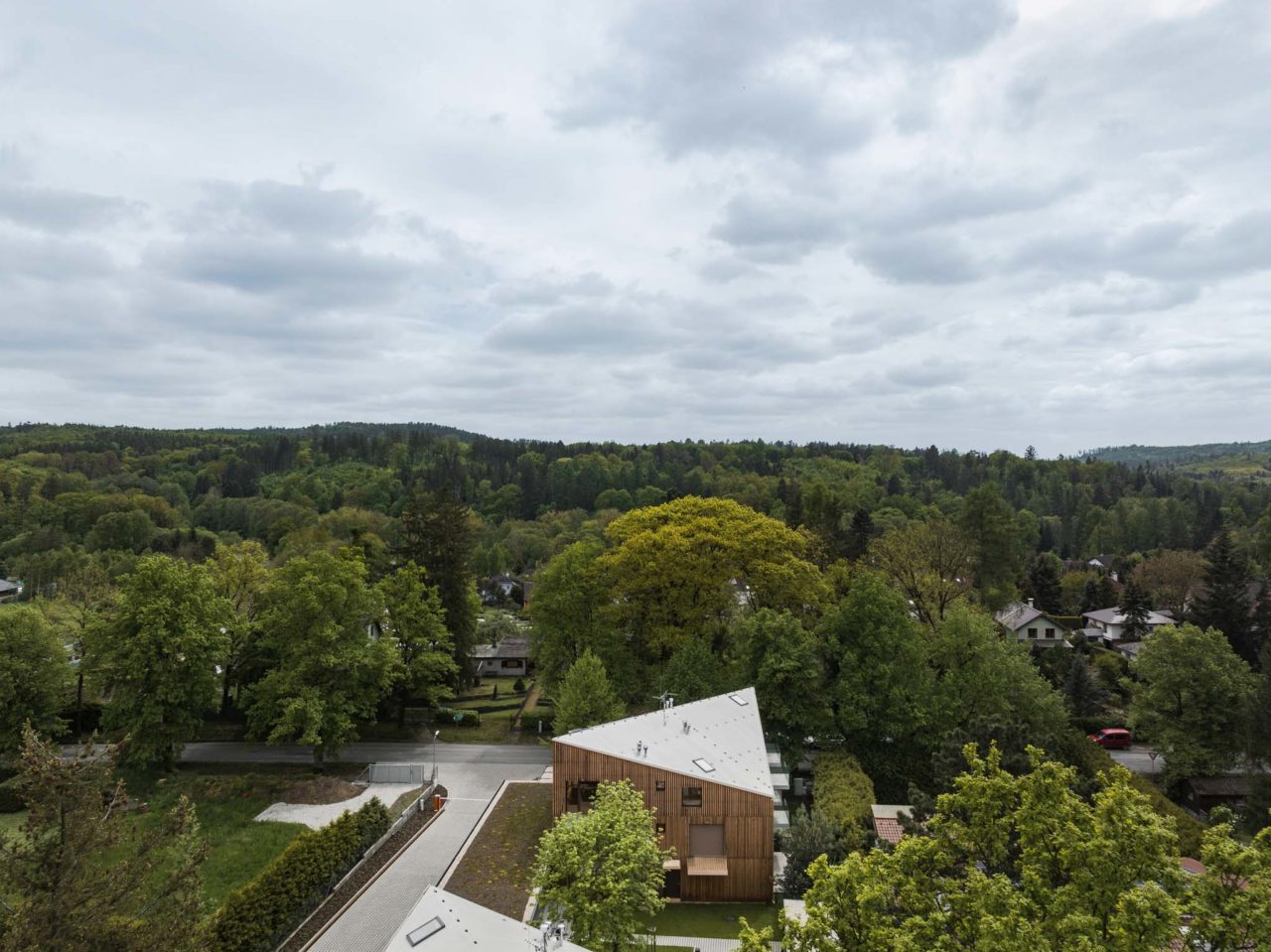

The project description is provided by the architects, via Linka.
About the Architects

NEW HOW is an architectural studio, which builds on the experience of the previous architecti.cz office and the independent work of its founding members, architects David Zámečník and Filip Havliš. The predominant part of the work is residential and commercial architecture, but in addition, the studio was given the opportunity to design several projects in a mountain environment. During its existence, the studio has received several awards in architectural competitions and their projects and realizations have been published in various professional media. So far, the studio’s greatest success has been winning an international architectural competition for the New Kežmarok Cottage in the High Tatras in Slovakia. Whether it is a small design, interior, house, or urban design, architects always try to create and collaborate with the client in the design process, ideally from study to implementation. They have verified during many years of practice that this is the only way to guarantee a quality result and final satisfaction on both sides.


